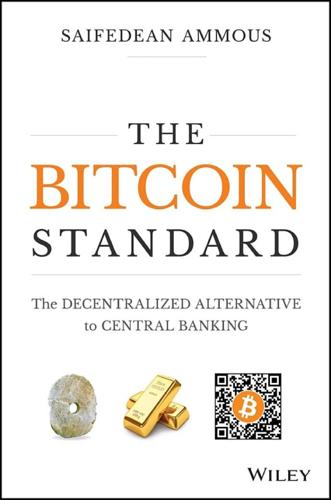
The Bitcoin Standard: The Decentralized Alternative to Central Banking
by
Saifedean Ammous
Published 23 Mar 2018
The temptation to engage in this is too strong, but the creation of the monetary medium is not an activity that is productive to society, as any supply of money is sufficient for any economy of any size. The more that a monetary medium restrains this drive for its creation, the better it is as a medium of exchange and stable store of value. Unlike all other goods, money's functions as a medium of exchange, store of value, and unit of account are completely orthogonal to its quantity. What matters in money is its purchasing power, not its quantity, and as such, any quantity of money is enough to fulfil the monetary functions, as long as it is divisible and groupable enough to satisfy holders' transaction and storage needs.
…
Chapter 6 Capitalism's Information System “The cause of waves of unemployment is not ‘capitalism’ but governments denying enterprise the right to produce good money.” —Friedrich Hayek Money's primary function as a medium of exchange is what allows economic actors to engage in economic planning and calculation. As economic production moves from the very primitive scale, it becomes harder for individuals to make production, consumption, and trade decisions without having a fixed frame of reference with which to compare the value of different objects to one another. This property, the unit of account, is the third function of money after being a medium of exchange and store of value. To understand the significance of this property to an economic system, we do what wise people always do when seeking to understand economic questions: turn to the work of dead Austrian economists.
…
As capital accumulation has made the process longer, it has become more productive per unit of labor, and it can produce superior products that were never possible for the primitive economy with basic tools and no capital accumulation. None of this would be possible without money playing the roles of medium of exchange to allow specialization; store of value to create future‐orientation and incentivize individuals to direct resources to investment instead of consumption; and unit of account to allow economic calculation of profits and losses. The history of money's evolution has seen various goods play the role of money, with varying degrees of hardness and soundness, depending on the technological capabilities of each era.
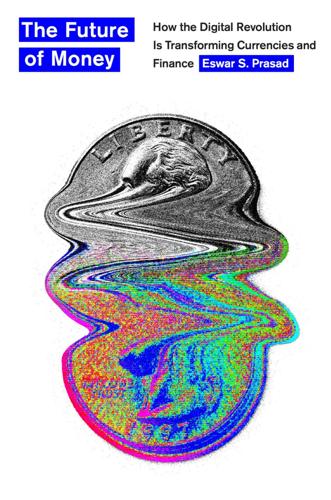
The Future of Money: How the Digital Revolution Is Transforming Currencies and Finance
by
Eswar S. Prasad
Published 27 Sep 2021
This chapter lays the foundation for thinking about how changes in financial technologies could affect money and finance. Functions and Forms of Money Money serves three basic functions: as a unit of account, a medium of exchange, and a store of value. A unit of account is used to denominate the prices of goods and services, creating a concrete way to express value. A medium of exchange can be used in financial transactions, including to buy goods and services. A store of value is a way to maintain the purchasing power of one’s earnings or wealth over time. Money facilitates transactions and also enables a market economy to function well and respond to changing circumstances.
…
The repercussions of such developments would not be confined to reduced demand for central bank currencies as mediums of exchange or stores of value; their consequences for the business models of banks and other existing financial institutions would create their own challenges. Central Banks on Notice The basic functions of central bank–issued money have arrived at the threshold of change. Fiat money now serves as a unit of account, a medium of exchange, and a store of value. The advent of various forms of digital currencies, and the technology behind them, has made it possible to parcel out these functions of money and has created direct competition for fiat currencies in some dimensions. Some of these changes could affect the very nature of money—how it is created, what forms it takes, and what roles it plays in the economy.
…
The proliferation of cryptocurrencies and their relationship to fiat currencies, whether physical or digital, is likely ultimately to hinge on how effectively each currency delivers on its intended functions. In this sense, by parceling out the various functions, cryptocurrencies have already changed the nature of money. Fiat money bundles together multiple functions as it serves as a unit of account, medium of exchange, and store of value. Now, with the advent of various forms of digital currencies, these functions can be separated conceptually. One might consider this a case of trying to make a virtue out of a shortcoming. After all, one clear takeaway from this chapter’s discussion is that while each cryptocurrency might have its specific strengths, neither Bitcoin nor any other cryptocurrency can boast the blend of stability, efficiency, privacy, and safety that would allow it to dominate central bank money.
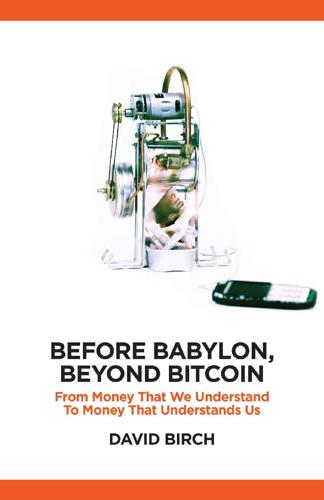
Before Babylon, Beyond Bitcoin: From Money That We Understand to Money That Understands Us (Perspectives)
by
David Birch
Published 14 Jun 2017
After coins were introduced, shekel became a general term used to describe silver coins that weighed a shekel, and then later it became the official name for the coin, completing the path from a stable store of value through medium of exchange to unit of account. We had debt, then we had banking, then we had money, and then, a couple of thousand years later, we invented coins. In inventing coins we invented cash: a medium of exchange that did not need to be redeemed against anything, but that could be self-assayed (within bounds) and passed from person to person indefinitely. Cash is just one form of money, although it dominates mental models because of its simplicity and familiarity, but it is not obviously the best form.
…
They conclude that currencies such as Bitcoin do not, at present, fulfil the economic roles associated with money. Firstly, Bitcoin is not a reliable store of value because of its volatility – although I could personally be persuaded that, over time, volatility could decrease to a point where it could become an acceptable store of value. Secondly, it has very restricted use as a medium of exchange, and my interpretation of the widely available usage figures is that it remains primarily a tool for speculation (there is very little retail use, and it is not clear to me that it will grow). And thirdly, it does not seem to be used as an independent unit of account against which other currencies might be measured.
…
There are hundreds of good books about the history of money and I have no intention of attempting to compete with them, or even summarize them here, but I do want to draw out a specific thread around the historical impact of technology on money, and that is about the way in which technology allows for the ‘moneyfication’ of debt (Graeber 2011a), converting a store of value into a mechanism for deferred payment and then a medium of exchange that can in turn become a unit of account. Moneyfication is a horrible word, but I hope you will come to see why I use it to start the story of money’s past. The functions of money The usual place to begin in an examination of the impact of technology on something – and I am nothing if not conservative in this respect – is to consider what that thing does.
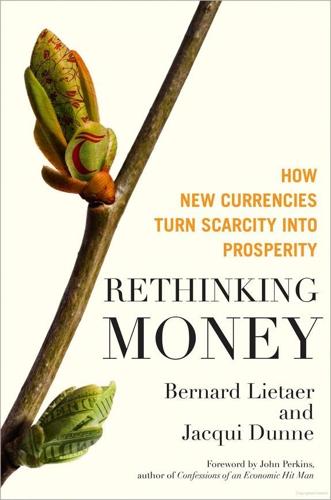
Rethinking Money: How New Currencies Turn Scarcity Into Prosperity
by
Bernard Lietaer
and
Jacqui Dunne
Published 4 Feb 2013
This blind spot is not a mere coincidence but, rather, endemic to the discipline. Economics textbooks, for example, define money by what it does, as discussed earlier—a store of value, a medium of exchange, a unit of account—rather than what it is. More important, never questioned is the assumption that the same monetary tool is needed to play all three roles. This disregards the fact that some of these roles may operate at cross-purposes. For example, a medium of exchange functions optimally when it is available and circulates, but a store of value can result in a currency’s effective removal from circulation. Traditional economics has never decoupled monetary architecture into its constituent parts.
…
In the case of money, its 1 2 INTRODUCTION dynamics and distinctions are obfuscated or forgotten over time, and further complicated by the fact that the professionals in the field, economists, never actually define what money is; they just describe what it does: how it plays the role of a unit of account, a store of value, a medium of exchange. At present, our unexamined money system perpetuates scarcity and breeds competition. Are you aware that money is created out of nothing, as bank debt? And how that particular process of creation breeds systematic competition among its users? Did you know that the prevailing money system generates several other harmful consequences, including short-termism, compulsory growth pressure, cyclical recessions, unrelenting concentration of wealth, and erosion of social and physical or natural capital?
…
There is, however, a broader context of what money is, as money can be found outside the narrow parameters of legal tender. As shown earlier, contemporary national currencies are all interest-bearing fiat currencies, debt based, created through the fractional banking system. They are designed to facilitate transactions (i.e., as a medium of exchange), used both as units of account and as savings (i.e., as temporary stores of value), and are particularly well adapted for business and industrial applications and settings. As already seen, the use of interest, especially compound interest, has very precise outcomes that do not necessarily benefit society at large. However, money can also be architected in other ways.
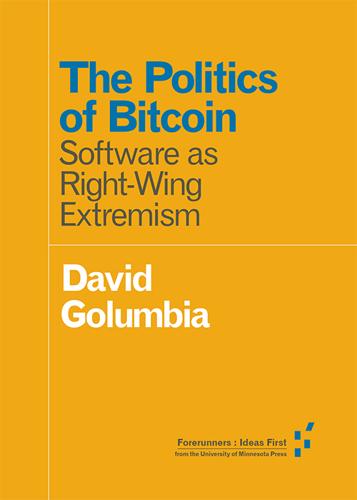
The Politics of Bitcoin: Software as Right-Wing Extremism
by
David Golumbia
Published 25 Sep 2016
“Money,” as we use the word today and as economists define it in standard textbooks, serves three critical functions: medium of exchange, store of value, and unit of account (see, e.g., Abel, Bernanke, and Croushore 2008, 248–49).[1] Medium of exchange means that a token (which need not be physical; a token might be nothing more than an entry in an accounting ledger) can be used to buy or sell products and services; store of value means that the tokens can be saved, and (despite a certain level of inherent volatility) can be relied on to maintain their purchasing power. Unit of account, sometimes also called measure of value, refers to the fact that the market uses the token in determining the value of products, which is to say, their prices.
…
Just as revealing are statements like those by self-described “currency trader and economics nerd” Brian Kelly, who in The Bitcoin Big Bang inaccurately attributes the threefold nature of money to currency, and despite this, after laying out the case that Bitcoin only serves the medium-of-exchange function, suggests that “we are too tethered to the conventional definition of a currency as a medium of exchange, a store of value, and a unit of account” (2015, 13). Bitcoin therefore is at once everything that money is, but to the degree it turns out not to be everything that money is, the definition is what’s wrong. The problem is that the definition provided by economists is descriptive, not normative: it says that the money function as we understand it is only filled by objects that have those three characteristics, not that this is how things should be.
…
As many economists have pointed out, though, virtually anything can serve as a medium of exchange, and nonmonetary media of exchange proliferate in our world: from frequent flyer miles to credit card bonus point programs, from grocery store coupons to high-value goods like fine art, precious metals, and gems.[2] None of these alternative currencies poses any threat whatsoever to national sovereignty over money, let alone national sovereignty itself. Yet Bitcoin advocates frequently attempt to redefine money as if the term refers only to medium of exchange. Whether Bitcoin serves the unit of account or measure of value function is much less clear. It is rare, though not unheard of, for markets to exist that price their goods only in Bitcoin, and rarer still for those prices to exist in relation to nothing other than Bitcoin: that is to say, even the infamous deep web drug marketplaces like Silk Road and its various offshoots clearly set the Bitcoin prices for their goods according to their value in official world currencies, despite having prices nominally listed in Bitcoin (i.e., those prices rise and fall with changes not just in Bitcoin’s valuation, but in the price of drugs in national currencies).
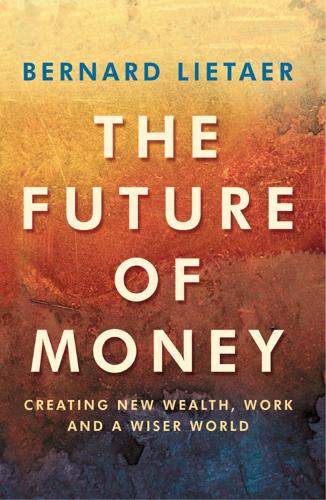
The Future of Money
by
Bernard Lietaer
Published 28 Apr 2013
Economic tech talk Economic textbooks define money in terms of its functions, me three most important of which are: Standard of Value, Medium of Exchange and Store of Value (definitions in Appendix A). Since 1971, there has been no international standard of value in this sense, a GAC simply restores that function far those who choose to use it as a contractual currency. The role of medium of exchange would be played by either the GRC or conventional national currencies at the choice of me parties - just as today's decision of which national currency is to be used for an international payment. Finally, the store of value function would not be played by the GRC. It could be played by instruments in conventional national currencies, or by new specialised financial products which would create liquidity, from investments in productive assets.
…
Standard of Measure: The value of the proverbial apples and oranges can be compared by expressing each of them in the same standard, typically dollars for Americans, euros for Europeans, etc. Historically, many cultures have had standards of measure different from the medium of exchange. For instance, one important unit of measure in ancient Europe used to be cattle Homer (8th century BC) would invariably express values in oxen for example. However, payments were often made in a more practical medium of exchange such as bronze artefacts, gold or silver bars and later coins. Store of Value: Currency was not the preferred store of value in most civilisations. For example, the word capital derives from the Latin capus, capitis, which means head. This referred to heads of cattle just as in Homer, and still happens today in Texas or among the Watutsi in Africa -'He is worth one thousand head'.
…
'The debate about the future of money is not about inflation or deflation, fixed or flexible exchange rates, gold or paper standards; it is about the kind of society in which money is to operate.’ APPENDIX A Other functions of money The functions of today's money system - other than as a medium of exchange or payment - are recalled here to complete the descriptions of the Primer and Chapter 2. National currencies today fulfil functions in addition to the one of medium of exchange. The most important of these other functions are a standard of measure, a store of value, an instrument for speculation, and in some cases a tool of empire. Standard of Measure: The value of the proverbial apples and oranges can be compared by expressing each of them in the same standard, typically dollars for Americans, euros for Europeans, etc.
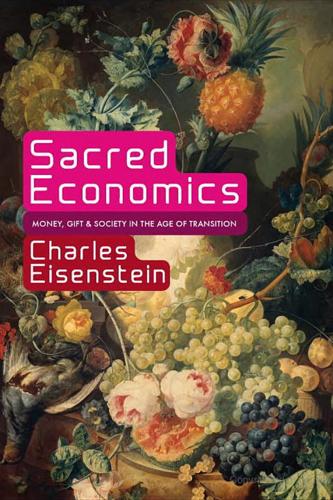
Sacred Economics: Money, Gift, and Society in the Age of Transition
by
Charles Eisenstein
Published 11 Jul 2011
—Silvio Gesell The equivalent in modern economics of “universal means” and “universal end” are “medium of exchange” and “store of value.” One way to understand the effect of negative interest is that it splits these two functions. This is a profound shift. Most economists consider medium of exchange and store of value to be defining functions of money. But combining these two functions into a single object begs trouble because a medium of exchange needs to circulate to be useful, while a store of value is kept (stored) away from circulation. This contradiction has, for centuries or more, created a tension between the wealth of the individual and the wealth of society.
…
Yet this is also cause for great optimism, because money is a social construction that we have the power to change. What new kinds of perceptions, and what new kinds of collective actions, would accompany a new kind of money? Here we are on Chapter 3, and I have not even defined “money” yet! Most economists define money by its functions, such as medium of exchange, unit of account, and store of value. Accordingly, they put a very early date on the origin of money, perhaps five thousand years ago with the emergence of standard commodities such as grain, oil, cattle, or gold that served these functions. But when I speak of money, I am talking about something quite different, something that first appeared in Greece in the seventh century BCE.
…
We can therefore see the bailouts, quantitative easing, and the other financial measures to save the economy as further exercises in perception management, but on a deeper, less conscious level. Because what is money, anyway? Money is merely a social agreement, a story that assigns meaning and roles. The classical definition of money—a medium of exchange, a store of value, a unit of account—describes what money does, but not what it is. Physically, it is now next to nothing. Socially, it is next to everything: the primary agent for the coordination of human activity and the focusing of collective human intention. The government’s deployment of trillions of dollars in money is little different from its earlier deployment of empty words.
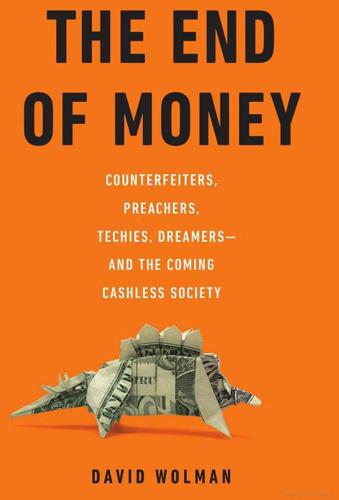
The End of Money: Counterfeiters, Preachers, Techies, Dreamers--And the Coming Cashless Society
by
David Wolman
Published 14 Feb 2012
It’s real, at least real enough that you can hold it, smell it, and want to wash your hands after handling it. Paper notes and metal coins are the treasures of our childhoods, tucked under pillows by tooth fairies, delivered in secret by doting grannies, and stashed safely in colorful lock boxes as we saved up for a new toy. Despite money’s dull textbook definition—medium of exchange, unit of account, store of value, and method of deferred payment—it is by way of cash that we first come to have any understanding of or relationship to this civilization-powering invention. When the word money reaches the ears, even Wall Streeters who hawk collateralized debt obligations will, at some level, picture a pile of Benjamins.
…
It’s an odd thing: killing money to save money. But that’s exactly what’s happening. Pennies, nickels, and dimes can barely be described as money anymore. Legally they are, sure, but they don’t exactly circulate. A store of value? Practically nil. Medium of exchange? Only if you have a boatload of them, which won’t exactly endear you to whomever you’re transacting with. A unit of account? Technically, but I don’t know anyone who uses the hundredths place in his mental accounting. Marketing types will be quick to tell you that consumers treat $2.99 differently from $3.00, but that’s because of the hypnotic power of the left digit.
…
Yet today’s efforts to defend against counterfeiters are vestiges of bygone eras of confusions about banknotes’ authenticity and suspicion about the alchemy of money creation. Through this prism, Kim Jong Il is merely adding a few million drops into the ocean that is the money supply. Depending on how finely you slice it, supernotes are real money—medium of exchange, store of value, unit of account, and so on. Illicit, sure, and they do hurt the Little Guy if he accepts one and then loses money because of it. But they can be traded for goods and services. The only thing that neutralizes the value of confiscated supernotes is that they’re stuck in a filing cabinet somewhere at the headquarters of the U.S.
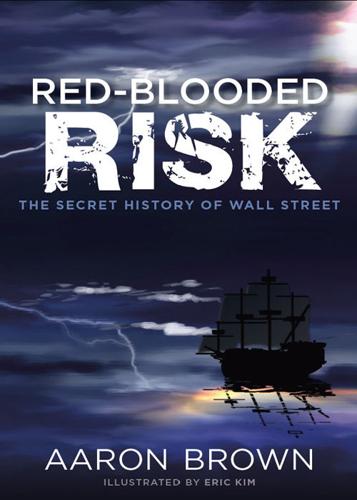
Red-Blooded Risk: The Secret History of Wall Street
by
Aaron Brown
and
Eric Kim
Published 10 Oct 2011
We’ll also see that those two things are essential for the creation of true money, defined as a single instrument that simultaneously functions as a medium of exchange, a store of value, and a numeraire or standard of value. Economists tend to emphasize the first two but we had token money and commodity money as mediums of exchange, and bulk metal as a store of value, for thousands of years before true money added the numeraire function and caused an explosion in value creation. We have many things that function as partial money today, credit cards as mediums of exchange, financial securities as stores of value, special drawing rights (a unit of account for transactions between central banks that is defined by reference to a basket of currencies) and consumer price indexes (a unit of account used by economists that is defined by reference to a basket of goods) as numeraires; but the forms of money that stimulate the economy are those that equate constraints and goals of important risk-taking activities.
…
Tax laws were complex and changed frequently, and the marginal rates were often very high. Governments were imposing wage and price controls and rationing many commodities—or forbidding buying or selling altogether. There were alternative currencies and abstract numeraires (a numeraire is a unit of account that assigns relative values to a set of items without necessarily being a medium of exchange or a store of value; an example is inflation-adjusted dollars), of course, but none were perfect. Therefore, we rejected the idea of a fully defined probability distribution that covered all possible future events. Our probability distributions might cover 95 percent or 99 percent of possible events, but would leave 5 percent or 1 percent as undefined outcomes, states of the world in which money was worthless, or in which outcomes were dominated by considerations that could not be priced.
…
The business might not survive, even though it has the potential for a 50 percent growth rate, or it might be run so conservatively that it never grows or innovates. What does the potter need to carry over luck? For one, he needs a store of value. Unsold pots are his only option without money, and they take a lot of room to store and have zero yield. He needs to be able to use that store to buy supplies when demand returns. Pots are not a good medium of exchange, and without money, he cannot sell them for a medium of exchange. But his biggest problem is that without a numeraire he cannot relate supply to demand, the price of pots to the price of clay, or even the price of one input versus another.
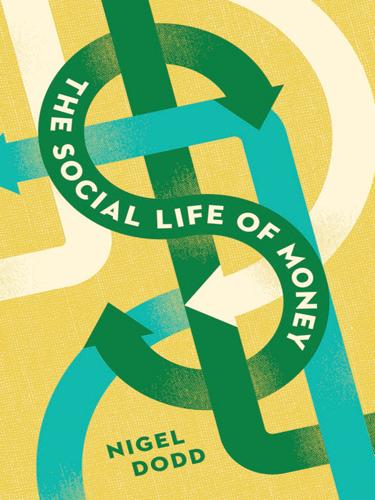
The Social Life of Money
by
Nigel Dodd
Published 14 May 2014
“Gold and silver are acceptable by law only because they are acceptable in practice; and they are acceptable in practice because the present organization of production needs a universal medium of exchange” (Marx 2005b: 63). Marx also disagrees with the argument that money evolved simply through barter. Exchanges mediated by money (commodity–money–commodity, or C–M–C) are different in kind from those involving barter (commodity–commodity, or C–C); indeed, this difference explains money’s function as a store of value and also explains the destabilizing effect of hoarding. In other words, money is not only, and not primarily, a medium of exchange. It is by virtue of fundamental differences between barter exchange and money that the acquisition of money (as opposed to any other commodity) can become an end in itself.
…
But for Marx, credit money is not money; or rather, it answers only one requirement of money. Hence the proliferation of monies in modern capitalism—commodities, paper, coins, and various forms of credit, derivatives, collateralized debt obligations, and so on—has been driven by the attempt to reconcile the desire for a quality store of value with the requirement for a frictionless medium of exchange. Periodically, fixity inevitably comes into conflict with flow. There are two important points to be taken out of this discussion of Marx’s theory of money and credit. The first point concerns the connection between money and the real economy. Marx insists that though money does not act as the sole cause of capitalism’s major contradictions, it does play a unique role in their reproduction, serving initially to neutralize and disguise them by appearing to operate independently, and subsequently to exacerbate them during periodic episodes of overaccumulation.
…
Food prices were peaking worldwide, partly because speculators were turning to the commodities markets (instead of credit markets), such as food, in the immediate aftermath of the subprime crisis (Lagi, Bertrand, et al. 2011). See http://www.psmag.com/politics/why-the-middle-east-is-rioting-46792/. 2 The Oxford English Dictionary carries both definitions of currency: as “that which is current as a medium of exchange; the circulating medium (whether coins or notes); the money of a country in actual use,” and on the other hand, as “the fact or quality of being current or passing from man to man as a medium of exchange; circulation.” 3 See http://www.demotix.com/news/876663/occupy-london-st-pauls-cathedral#media-876391. 1 ORIGINS At the beginning, there was no money. BANCO CENTRO DO BRASIL1 Books on money, almost as a chorus, invariably begin with a discussion of its most simple, elementary forms, much as Durkheim began his investigation of religion.
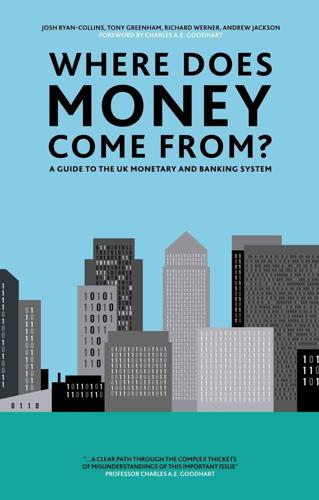
Where Does Money Come From?: A Guide to the UK Monetary & Banking System
by
Josh Ryan-Collins
,
Tony Greenham
,
Richard Werner
and
Andrew Jackson
Published 14 Apr 2012
Money is generally described by economists in terms of its functions rather than any kind of overarching property or essence. It is generally viewed as having four key functions:4 Store of value – holding on to money gives us confidence in our future ability to access goods and services – it gives us future ‘purchasing power’. Medium of exchange – enables us to conduct efficient transactions and trade with each other. Money enables us to move beyond barter relations which require both parties to have exactly the right quality and quantity of a commodity to make an exchange – a ‘double coincidence of wants’.5 Unit of account – without a widely agreed upon unit of measurement we cannot settle debts or establish effective price systems, both key elements of capitalist economies.
…
Evidence points to the common origins of money, debts and writing in the tax levies of the palaces.45 One strand of monetary theory, known as Chartalism, argues that as palaces expanded their domains, tax payments became standardised in terms of quantities or weights of widely used commodities, such as wheat or barley. These formed the basis for all the early ‘money of account’ units, such as the mina, shekel, lira and pound. Money originated then, not as a cost-minimising medium of exchange as in the orthodox story, but as the unit of account in which debts to the palace, specifically tax liabilities, were measured.46, 47 It is the state’s coercive power to tax its citizens that defines the unit of account as the primary function of money, as Mitchell Innes stated in 1913: The Government by law obliges certain selected persons to become its debtors. This procedure is called levying a tax, and the persons thus forced into this position of debtors to the Government must in theory seek out the holders of the tallies and acquire from them the tallies by selling to them some commodity in exchange for which they may be induced to part with their tallies.
…
Such currencies have been described as ‘common tender’41 to distinguish them from fiat currencies or legal tenders and are also known generically as ‘complementary currencies’ to denote that they work in tandem with national fiat currencies rather than aiming to entirely replace them. They often specifically focus on fulfilling the ‘medium of exchange’ function of money and have provisions to prevent people hoarding the currency as a store of value. The best known examples are from the Great Depression era where in both the United States and Europe, ‘stamp scrip’ currencies were issued to support businesses and local production as national currencies became scarce because of deflation.42 One of the survivors of this period is the Swiss WIR credit-clearing circle created in 1934.
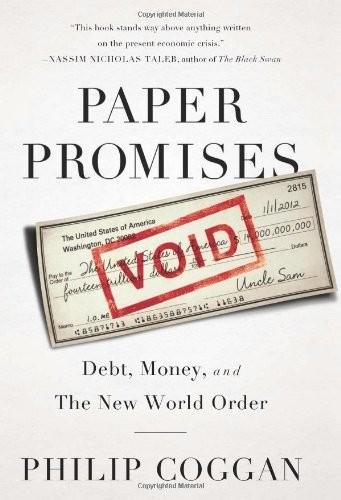
Paper Promises
by
Philip Coggan
Published 1 Dec 2011
Nor indeed, with the exception of dictatorships like North Korea, is it necessarily what the government claims it to be. Money is a medium of exchange and a store of value. In its former role, money is almost infinitely flexible; it is simply the form of payment that someone will accept for goods and services. Air miles are a good example. They are not accounted for in any of the central bank definitions of money supply. But as they can be exchanged for a flight, they certainly qualify as a medium of exchange. If there is not enough official money to go round, but people want to trade, new forms of money will be invented; cigarettes and petrol in times of war, ration books in years of austerity, and so on.
…
Not wishing to end up with unwanted Icelandic krona, I took along some euros in the hope they would be accepted for cash deals (buying coffees, newspapers and the like). Shopkeepers would indeed accept the euros, but they would return krona, not euro, coins as change. The euro had a ‘real’ value, which made them want to hoard it. The krona they were happy to get rid of. In other words, the krona was acceptable as a medium of exchange but the euro was seen as the store of value. The idea that precious metals were the only real wealth led to the doctrine of mercantilism, an economic policy followed by states in the late Middle Ages and early modern period. Governments were determined to hang on to as much money as possible, by prohibiting the export of precious metals, and by promoting exports and prohibiting imports.
…
Short of that desperate expedient, they can only hope to influence the amount of money in the system, in part through manipulation of interest rates (when rates are low, the demand for credit will go up and banks will supply it, thereby creating more money), and in part through the reserves they require banks to hold (again, the lower the level of reserves, the more the banks will lend). But this process, as the world found in 2007 – 08, can be very hard to control. BANKING MONEY Banks are at the heart of the modern financial system. They fulfil two of the three key functions of money – as ‘store of value’ and as ‘medium of exchange’. Most people in the developed world keep the core element of their savings in a bank and expect that money to hold its nominal value (i.e. not adjusted for inflation). Banks also are the medium through which most monetary exchanges are made; cheques, debit-card and credit-card payments are all processed through the banking system and cash payments are usually withdrawn from a bank.
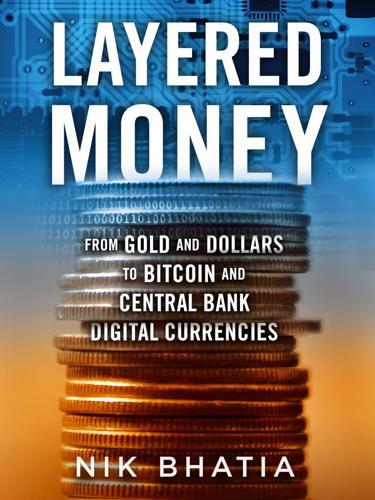
Layered Money: From Gold and Dollars to Bitcoin and Central Bank Digital Currencies
by
Nik Bhatia
Published 18 Jan 2021
Iron tools were highly valuable for hunting and weaponry and could hold value for centuries but weren’t necessarily the best circulating medium because they lacked portability and divisibility, unlike shells. Precious metals worked well in both capacities and gradually became universally agreed upon as the best form of money. Money isn’t only used as a medium of exchange and a store of value; it’s also a counting system. It’s a way of listing prices, tallying revenue, calculating profits, and bringing the entire array of economic activity under one accounting denomination. The Latin root of the word denomination is nomin, or name. Religious denominations are a way for people to name their particular religious beliefs, just as accounting denominations are a way for people to name their revenues, expenses, and profits.
…
Shells and tobacco sufficed as regional money because they each demonstrated some, but not all, of the monetary characteristics of coinage. Neither was perfect, but they each successfully served as money for many decades. Both were divisible, difficult to conjure up, relatively fungible, and modestly durable. Eventually, they would be replaced as mediums of exchange and units of account by a historically superior form of money: gold and silver coinage. As time elapsed, more foreign gold and silver coins started circulating as currency throughout the colonies. The most popular coin amongst the people was the Spanish silver dollar. In 1784, Thomas Jefferson published his Notes on the Establishment of a Money Unit, and of a Coinage for the United States, and provided the argument for the dollar as the new American currency unit: [The] Dollar is a known coin, and the most familiar of all to the minds of the people.
…
It’s the speed at which money moves from one owner to the next, and only with sufficient speed can money help human beings trade to their fullest potential. Gold and silver coins accelerated money velocity relative to more primitive ages when precious metal bars and nuggets of non-standardized weights were used as mediums of exchange. But a world of coin multiplicity where thousands of competing coins were used meant that an equivalency conversion had to occur alongside practically every single transaction between people of different geographies. This presented major challenges to unlocking the next levels of money velocity and international trade, because standards for weights and purities varied wildly across the world.
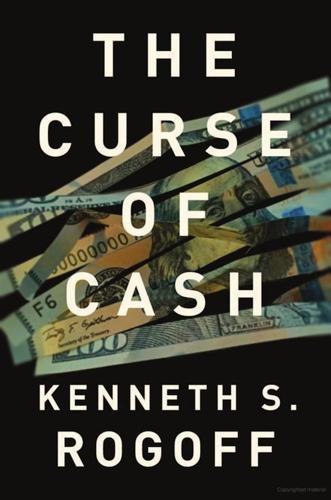
The Curse of Cash
by
Kenneth S Rogoff
Published 29 Aug 2016
THE BIRTH OF PAPER CURRENCY IN CHINA For all its flaws, including ones that Goethe highlighted in Faust, there are very good reasons why, over the years, paper money has mopped the floor with its competitors all over the world. Paper money delivers portability, homogeneity, security, durability, and convenience. It serves perfectly well as a unit of account and a medium of exchange, and during periods of low inflation, it also serves well as a store of value. The story of how money developed in China holds some interesting lessons, which we draw on later in chapter 7. There I argue that as paper currency is gradually phased out, eventually even the remaining small notes should be replaced with moderately substantial coins, to make it even more difficult to carry large quantities of currency.
…
In some developing countries, for example, the banking system is so weak that it is difficult to procure the kind of short-term credits that are the lifeblood of global trade, so instead deals often take place in cash.12 In countries with a large underground economy (tax evading or otherwise criminal), the dollar is used both as medium of exchange and as a store of value. Measurement of these phenomena, however, is fraught with difficulty. It is extremely hard to say with any great precision how much paper currency leaks out of the United States unofficially, or conversely, what percentage of currency the Federal Reserve ships abroad subsequently crosses back into the United States undetected.
…
They were called in and replaced with a national currency of silver notes that had the unusual feature of being worth only half their face value in silver, if ever tendered for exchange at the Khan’s treasury.18 (In chapter 10, we will see Kublai Khan’s idea of creating a wedge between paper currency and the official unit of account echoed in the ingenious Eisler-Buiter-Kimball scheme for paying negative interest rates.) Unlike many previous note issues, Kublai Khan’s notes had no expiration date. By 1262, Kublai Khan’s government had prohibited the use of gold and silver as a medium of exchange, with the highly credible threat of death for those who dared disobey. By the late 1270s, convertibility into species became increasingly difficult, effectively transforming the Mongol currency into a pure fiat money.19 As mentioned in chapter 1, a pure fiat monetary regime is one in which the currency cannot be taken to the central bank or treasury in exchange for gold or silver, or any other commodity for that matter.
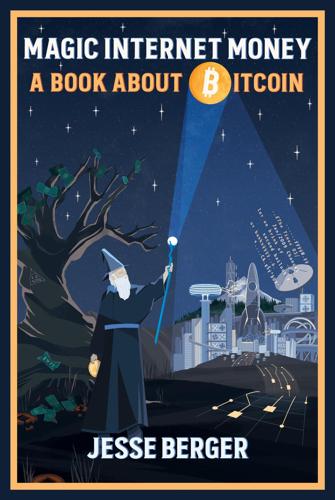
Magic Internet Money: A Book About Bitcoin
by
Jesse Berger
Published 14 Sep 2020
Money should be costly, so that the means by which it is produced or acquired establishes a basis for value. With these attributes, money could fulfill its three primary functions. Medium of exchange: Agreeable method of payment for the sale, purchase, or trade of goods and services. Unit of account: Standardizes the measurement of value in order to accurately determine pricing for commerce. Store of value: Has beneficial and desirable qualities that can be reliably preserved over time. 3.3 A Very, Very Brief History of Money “The promise given was a necessity of the past: the word broken is a necessity of the present.”
…
Satoshi Nakamoto, Creator of Bitcoin Today, fiat functions as money because it satisfies the three primary functions – albeit tenuously. Medium of exchange: Legal tender laws require that, to varying degrees, fiat be used within a country for commerce. Legally enforcing fiat assures a high degree of acceptability, even if it is somewhat constrained by borders and red tape. Unit of account: Fiat is moderately useful because it is easily divided, counted, and is commonly accepted, but its unstable and unpredictable monetary policies blunt the precision with which it can accurately measure value over time. Store of value: With no sound underlying basis, fiat currency has value due to little else besides the general expectation that it should be valuable.
…
Fernando Ulrich, Money, Banking & Technology Analyst Bitcoin functions as money because it adheres to the three primary functions. Medium of exchange: Although not commonly used in commerce today, it can be traded on demand, so its design is suitable for this purpose. In the future, greater understanding and trust in its benefits, combined with improved ease of use, will increase the fluidity and likelihood of its acceptance. Unit of account: Bitcoin is always accurately authenticating each and every fraction of coin, and its supply is strictly limited, making it very useful as a finely tuned and enduring scale for the measurement of value. Store of value: Bitcoin currently behaves more like a speculative store of value than a lasting one, since its value proposition is not assured in public markets.
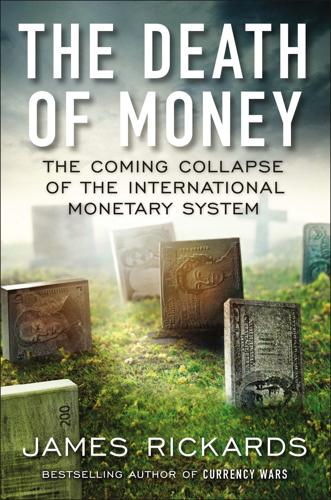
The Death of Money: The Coming Collapse of the International Monetary System
by
James Rickards
Published 7 Apr 2014
Most people respond that a dollar is money, something they make, spend, or save. That raises another question: What is money? Experts recite the three-part definition of money as a medium of exchange, a store of value, and a unit of account. The unit of account part of the definition is useful but almost trivial. Bottle caps can be a unit of account; so can knots on a string. A unit of account is merely a way of adding or subtracting perceived value. Medium of exchange also refers indirectly to value, since each party to an exchange must perceive value in the unit being exchanged for goods or services. Two of the three parts of the definition implicitly reference value.
…
Its value as a reserve asset derives from the commitments of participants to hold and accept SDRs. . . . The SDR is also used by a number of international and regional organizations as a unit of account. . . . Participants and prescribed holders can use and receive SDRs in transactions . . . among themselves. As money is classically defined as having three essential qualities—store of value, unit of account, and medium of exchange—this disclosure clinches the case for the SDR as money. The IMF itself says the SDR has value, is a unit of account, and can be used as a medium of exchange in transactions among designated holders. The three-part money definition is satisfied in full. The amount of SDRs in circulation is minuscule compared to national and regional currencies such as the dollar and euro.
…
U.S. financial sanctions aimed at Syria caused the Syrian pound to lose 66 percent of its value in the twelve months from July 2012 to July 2013. Inflation in Syria spiked to an annual rate of 200 percent as a result. The Syrian government was forced to conduct business in the currencies of its three principal allies—Iranian rials, Russian rubles, and Chinese yuan—because the Syrian pound had practically ceased to function as a medium of exchange. By late 2013, the financial damage in Iran led to an agreement between President Obama and Iranian president Hassan Rouhani, which eased U.S. financial attacks in exchange for Iranian concessions on its uranium enrichment programs. Iran had suffered from the sanctions, but it had not collapsed, and now it had met the United States at the negotiating table.
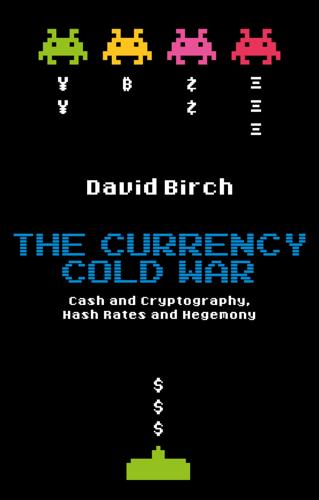
The Currency Cold War: Cash and Cryptography, Hash Rates and Hegemony
by
David G. W. Birch
Published 14 Apr 2020
The history of digital cash can also show us a particularly vivid example of the use of money and technologies to tell us stories about the future. — Finn Brunton, Digital Cash (2019) So, what is digital currency? It is a kind of digital money that has become a unit of account as well as a store of value and a medium of exchange. So far, so good. But wait: what is digital money? It is a kind of electronic money (e-money) that can serve as a store of value and can be analogue or digital;2 either way, it lives inside chips and computers, not pockets and purses. Digital money, then, is e-money. When people talk about digital currency, though, they generally mean something more than a form of e-money.
…
In developed markets, almost all money is electronic, with only a small fraction being made up of notes and coins. When people talk about digital currency, what they are really talking about is going all the way and replacing those notes and coins. It is not simply a matter of replacing the store of value, either, but of replacing cash as a medium of exchange. From the earliest days of the internet, people have wanted the kind of electronic cash (e-cash) that would replace physical cash. Here, for example, are Daniel Lynch (a founder of CyberCash, one of the earliest enterprises in this space) and Leslie Lundquist writing in the early days of the web (Lynch and Lundquist 1996): What is digital money?
…
Isolated villages became connected, trade moved beyond being purely local, and the growth of towns and cities made it impossible to remember who owed what and to whom. An intermediary was needed. We took the means for deferred payments (the settlement of debts) and turned them into stores of value that could be traded. These, in turn, became a medium of exchange: asset claims moved from memory to clay tablets to coins. Today, we are no longer in the clan village of the ancient past or the urban anonymity of the recent past. We are in Marshall McLuhan’s ‘global village’, where the digitization of the world allows us to be connected to everyone, everywhere and all the time.
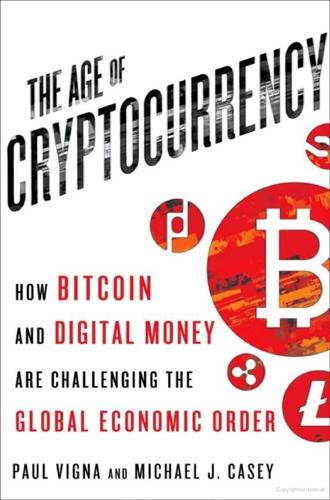
The Age of Cryptocurrency: How Bitcoin and Digital Money Are Challenging the Global Economic Order
by
Paul Vigna
and
Michael J. Casey
Published 27 Jan 2015
One familiar benchmark says that for a currency to become money it must function as a medium of exchange, a unit of account, and a store of value. Dollars can be used to buy things all around the world; they are used to measure the value of pretty much anything; and most, if not all, people believe their savings will be more or less protected over time if they are denominated in dollars. While bitcoin is currently used as a medium of exchange by various people to buy and sell things, few use it as a unit of account. Merchants that accept bitcoins invariably list their products’ prices in the national currency of the country in which they are based. As for a store of value, the speculators who’ve bought bitcoin in the hope of future gains certainly believe it has this feature, but for most people its volatility precludes it.
…
By contrast, the price of gasoline dropped and rose by no more than 12 percent in dollar terms over the same period. Extrapolating from the three-part textbook definition of “money” that we referenced in chapter 2, a currency must exhibit price stability if it is to function properly as a medium of exchange—in addition to proving itself a reliable store of value and an accepted unit of account. It’s hard to suggest that bitcoin now has anywhere near the price stability that’s needed. That’s a direct result of its fluctuation versus other currencies. In an extensive study of bitcoin’s price performance against various other currencies and assets, New York University professor David Yermack concluded that bitcoin is much better viewed as a commodity than as a currency.
…
Having said that, let’s start with the two scenarios alluded to in that same question—whether bitcoin gets to dominate the world or joins Betamax on the trash heap of history. From there we’ll go on to look at possibilities in between those two contradictory conclusions as well as some completely different tangents on which cryptocurrency could take society. The “No” Case Money has three broad characteristics: it’s a unit of account, a medium of exchange, and a store of value. For bitcoin, or any cryptocurrency, to achieve all three, that whole concept is going to need broad-based support—if not from consumers then from businesses that will use the technology to cut costs. It may fail to earn that support even if the product is technically solid.
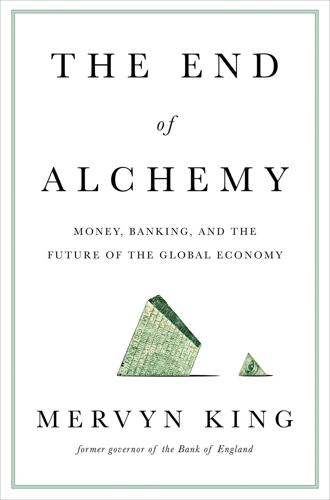
The End of Alchemy: Money, Banking and the Future of the Global Economy
by
Mervyn King
Published 3 Mar 2016
Everything has been settled during the initial auction, and all people have to do is to deliver the services, such as employment, for which they have contracted and take delivery of the goods and services that they purchased in the auction. There is no need for something called money to act as either a medium of exchange (the ‘double coincidence of wants’ problem is circumvented by the auction), a store of value (there is no requirement for a reserve of savings), or indeed an absolute standard of value (consumers bidding in the auction need only know the relative prices of different goods and services, including labour). Money has no place in an economy with the grand auction.
…
Radical uncertainty means, however, that there will always be a demand for liquidity as a reserve of future purchasing power, and the ultimate source of liquidity is the central bank. Moreover, there is one additional role for a public body that it makes sense to give to the central bank – the regulation of the unit of account. Even if money disappears as a means of payment, we will always need a stable unit of account to price goods and services.41 There is an enormous advantage in all of us agreeing to use the same unit of account determined centrally rather than allowing a profusion of different monies. We rely on weights and measures inspectors to ensure that retailers who use yards (or metres) and pounds (or kilograms) as the units of length and weight define them in exactly the same way.
…
The volatility of bitcoins is an order of magnitude higher than the other currencies. 40 Economies of this kind have been discussed by Fama (1980), Hall (1983) and Issing (1999). 41 On money as a unit of account see Doepke and Schneider (2013). 42 Magna Carta, chapter 35, translation of the original Latin of 1215. 43 Hayek (1976). A theoretical discussion can be found in King (1983) and the response by Summers (1983). 44 The second possible problem with a free market in paper money is that, even with a common unit of account, new entrants can undermine confidence in existing monies. Suppose that we start with one paper money, which is called a dollar. The cost of printing a dollar banknote is at most a few cents.
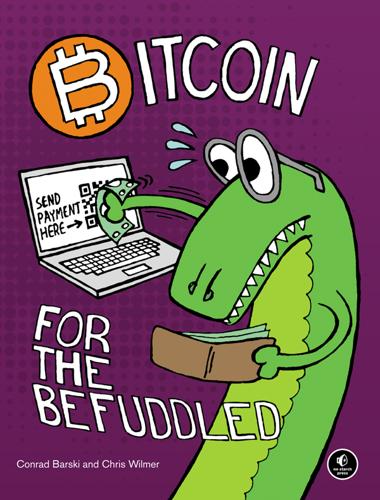
Bitcoin for the Befuddled
by
Conrad Barski
Published 13 Nov 2014
If Bitcoin were ever to become a popular store of value, it would represent some fraction of that $175 trillion. Even if only 1 percent of the world’s wealth was stored in the form of bitcoins, the total value of the Bitcoin economy would be in the multitrillion-dollar range. Since we know that there will only ever be at most 21 million bitcoins in circulation, each bitcoin would need to be worth hundreds of thousands of dollars in order for Bitcoin to store 1 percent of the world’s wealth. Using Bitcoin as a Medium of Exchange If Bitcoin becomes primarily used as a medium of exchange (i.e., a payment mechanism), people would keep only as many bitcoins on hand as they needed for purchases and would keep the bulk of their savings in other places.
…
In other words, if you buy a hamburger at a restaurant today for $10, let’s assume that it will take about a month before those same$10 are spent by the restaurant owner. Using these assumptions, we can roughly estimate that approximately $1,200 needs to be in circulation per person at any moment. For 1 billion people, a total of $1.2 trillion worth of currency needs to be in circulation as a medium of exchange for the world economy to function. If Bitcoin became a widely adopted medium of exchange, some part of this $1.2 trillion payment economy would be executed in bitcoins. Again, because of the hard limit of 21 million bitcoins, we know that if bitcoins were used for just 1 percent of the world’s transactions, then each bitcoin would need to be worth tens of thousands to hundreds of thousands of dollars.
…
For this reason, it doesn’t make sense to try to assign a precise estimate to the value of bitcoins in the future. The best we can do is suggest that Bitcoin has potential as a technology, and in the future it could be a big deal—that is, if it doesn’t first fail in the many possible ways we’ve considered. UNIT OF ACCOUNT It’s theoretically possible in the distant future that a currency like Bitcoin could be used to denominate the prices of goods as an international standard. Using Bitcoin as a unit of account is certainly an intriguing idea, and this purpose is commonly mentioned in economic texts as an important role of money, but it would have negligible economic impact on the future world economy. The reason is that using Bitcoin as a pricing standard, in itself, doesn’t directly affect how many bitcoins or other goods are bought or sold, simply because you can “measure” items in Bitcoin without needing to own them.
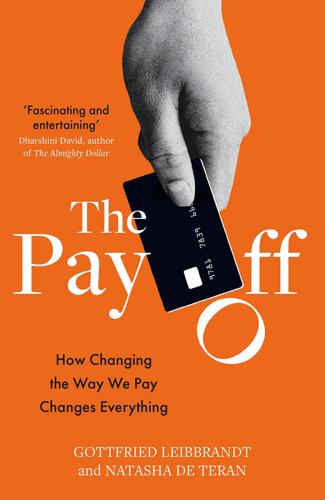
The Pay Off: How Changing the Way We Pay Changes Everything
by
Gottfried Leibbrandt
and
Natasha de Teran
Published 14 Jul 2021
Since Libra would be a whole new currency, would it effectively replace existing national currencies as the unit of account – the means by which we measure the value of things, not least our debts and taxes? Money has three fundamental functions: it acts as a store of value, a medium of exchange and a unit of account. If a particular form of money serves as a unit of account, it means we use it to count everything else: this shirt costs €25. The unit of account function is the most important one. You can have a store of value without the other two: real estate is generally a good store of value, but it’s a terrible medium of exchange and no great unit of value. You can also have a medium of exchange that (tends to be) a good store of value but isn’t a unit of account – gold, for instance.
…
You can also have a medium of exchange that (tends to be) a good store of value but isn’t a unit of account – gold, for instance. But there are hardly any examples of units of account that are not also good media of exchange and stores of value.1 Much like languages or measures, the unit of account is a convention that is deeply embedded in society. It provides a frame of reference for all economic activity. Changing it throws people off-balance. The euro was introduced virtually in 1999 and notes and coins started circulating in 2002, but as late as 2004 French house prices were still being quoted in francs.
…
The survival of the guinea was therefore a neat way for auctioneers to factor their commission into a sale. The unit of account is an extremely powerful tool. It allows a country to increase its competitiveness through devaluation: local costs such as salaries are counted in local currency and a devaluation effectively lowers wages and salaries without the pain of enforcing pay cuts. Messing with the unit of account can also redistribute wealth in an economy, for example through hyper-inflation, which transfers wealth from savers to borrowers: debts ‘melt’ away, which is good for borrowers, but so do savings, which is of course disastrous for savers. Countries with their own units of account and flexible exchange rates can implement their own monetary policies – raising and lowering interest rates, for instance.
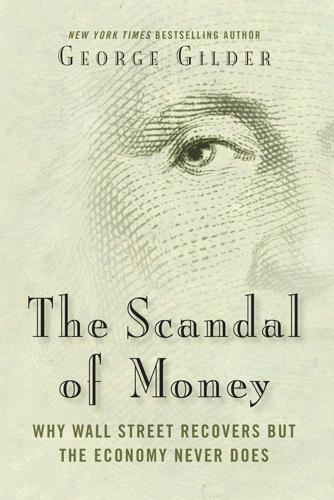
The Scandal of Money
by
George Gilder
Published 23 Feb 2016
Chapter 2 Justice before Growth If an expensive car crashes into a wall, all the information and value disappears though all its atoms and molecules remain. Value is information. The car is knowledge. —Cesar Hidalgo, Why Information Grows (2015) Money is the central information utility of the world economy. As a medium of exchange, store of value, and unit of account, money is the critical vessel of information about the conditions of markets around the globe in both time and space. Monetary systems thus can be judged as moral systems—do they lie or tell the truth? In my last book, Knowledge and Power: The Information Theory of Capitalism and How It Is Revolutionizing Our World, I found that wealth is knowledge and growth is learning and that both are governed by the rigorous science of information.1 Prehistoric man commanded all the material resources we have today.
…
What Turner and Piketty and their sponsor George Soros curiously fail to confront is the global ocean of currency trading, which is the alternative to money as a metric with secure roots in the constants of nature. These bold thinkers simply cannot conceive of real money as a measuring stick. They remain at sea, therefore, in a currency morass that all their policies would make still worse. Chapter 10 Hypertrophy of Finance With the fall of gold as a means of payment and as a unit of account (but not yet as a store of value) . . . , the world monetary system is not easy to understand. At least conceptually, the pre-1914 gold standard was simple: the domestic and international means of payment were the same. —Ronald McKinnon (1979)1 What can an exchange rate really mean . . . when it changes by 30 percent or more in the space of 12 months only to reverse itself?
…
The agents of this injustice are familiar, from the White House to the Federal Reserve Bank, from the Congress to the corporatocracy, from the Ivy League to Wall Street. To accomplish these goals, these elites have ceaselessly eroded the concept of money itself. Both government and financial institutions have transformed money from a neutral medium of exchange, a standard of value, a measure of learning and store of wealth into a manipulable lever of power and privilege. The Fed, acting as a fourth branch of government, regulating the banks and financing the government and its affiliates at zero interest rates; the Ivy League universities, embracing a secular religion of climate and “clean energy” that requires expert regulation of all production; the “best and brightest” disdaining manufacturing and swarming into finance, by far the world’s largest industry—all these elites have captured scores of trillions of dollars of unearned wealth.

Money Changes Everything: How Finance Made Civilization Possible
by
William N. Goetzmann
Published 11 Apr 2016
As early as the Shang civilization, China developed a monetary society quite independently, but, in similar fashion to the civilizations of Greece and Rome, money ultimately played an important role in governance and the economy. Chapter 3 described how Mesopotamians used silver as a medium of exchange—they paid taxes in silver, made contracts, and even recorded commodity prices in silver weights. Silver fits most of the classic definitions of money: a medium of exchange, store of value, and standard of worth. However, the cowrie shells in Fu Hao’s tomb are the telltale sign of a step beyond the Mesopotamian money system—away from a medium of exchange with intrinsic value toward a symbolic system of exchange. Chapter 6 noted that the first coins known in the Mediterranean world were electrum pellets minted in Lydia sometime in the sixth century BCE.
…
While we tend to think of precious metals as “luxury goods” and perhaps dismiss them as prestige items of the upper class, it is the seemingly arbitrary assignment of prestige to silver and gold that rendered them useful as currency. Silver’s particular utility as a currency or unit of account is that it was accepted widely in the ancient Near East as money. Its value was global, not local. It allowed distant cities—even adversaries—to interact economically. Grain was the “coin of the realm” within a household system that produced and distributed subsistence goods locally to its members. In contrast, silver was the medium of exchange that connected Mesopotamian cities with the broader world. The focus of this chapter has been the remarkable institutional development of financial technology in the second millennium BCE.
…
Yet in Mesopotamia it was borrowed, lent, invested, used in payment, and collected as taxes. The ancient Mesopotamians regarded it as vital as any other good that they consumed or used in manufacture; however, silver’s value was abstract. It was valuable because it was valuable.5 Van De Mieroop argues that silver developed as a unit of value and medium of exchange in Mesopotamia because the political structure up until the late second millennium was fragmented into city-states that had to trade with one another and had to trade externally to obtain key goods. Silver was important because it was a broadly accepted currency beyond the relatively limited borders of the early Near Eastern polities.
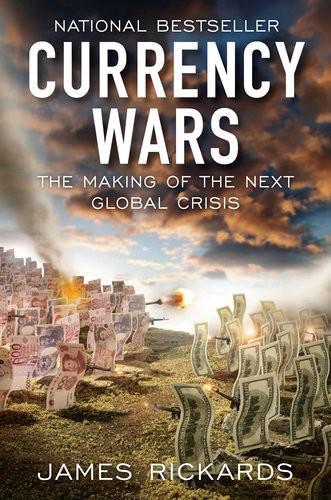
Currency Wars: The Making of the Next Gobal Crisis
by
James Rickards
Published 10 Nov 2011
After all, individual citizens can’t obtain them, and if you walk into a liquor store and try paying for a few bottles of wine with SDRs, you will not get very far. However, SDRs do satisfy the traditional definition of money in many respects. SDRs are a store of value because nations maintain part of their reserves in SDR-denominated assets. They are a medium of exchange because nations that run trade deficits or surpluses can settle their local currency trade balances with other nations in SDR-denominated instruments. Finally, SDRs are a unit of account because the IMF keeps its books and records, its assets and liabilities in SDR units. What is different about SDRs is that citizens and corporations in private transactions cannot yet use them.
…
It would not offer a permanent solution and would at most buy a few weeks’ time within which to develop more lasting solutions. At this point policy makers would recognize that the paper dollar as currently understood had outlived its usefulness. Its claim to be a store of value had collapsed due to a total lack of trust and confidence, and as a result its other functions as a medium of exchange and unit of account have evaporated. A new currency is now required. More of the same would be unacceptable; therefore, the new currency would certainly have to be gold backed. Now the hidden strength of the U.S. financial position would be revealed.
…
In the first case, shown in Table 1 below, the bands are divided from the lowest critical thresholds to the highest as follows:Table 1: HYPOTHETICAL CRITICAL THRESHOLDS (T) FOR DOLLAR REPUDIATION IN U.S. POPULATION The test case begins by asking what would happen if one hundred people suddenly repudiated the dollar. Repudiation means an individual rejects the dollar’s traditional functions as a medium of exchange, store of value and reliable way to set prices and perform other counting functions. These one hundred people would not willingly hold dollars and would consistently convert any dollars they obtained into hard assets such as precious metals, land, buildings and art. They would not rely on their ability to reconvert these hard assets into dollars in the future and would look only to the intrinsic value of the assets.
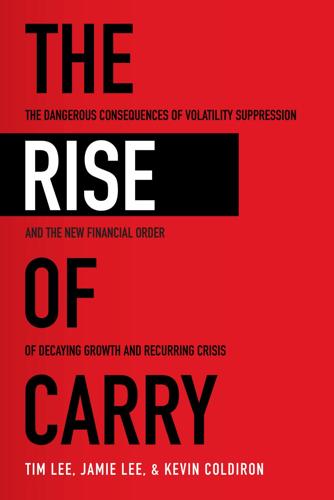
The Rise of Carry: The Dangerous Consequences of Volatility Suppression and the New Financial Order of Decaying Growth and Recurring Crisis
by
Tim Lee
,
Jamie Lee
and
Kevin Coldiron
Published 13 Dec 2019
The emergence of cryptocurrencies has been an early sign that the fundamental, long-run monetary instability that lies behind the financial carry regime is already undermining trust in fiat money. Classically, the three functions that money fulfills are as a medium of exchange, a store of value, and a unit of account, the store of value being the crucial attribute in this respect. But these functions are related to each other; if money’s utility as a store of value becomes critically undermined, it is then likely to become less viable as a medium of exchange. That is traditionally what has been experienced in hyperinflations, which is when other, competing, forms of money are most likely to appear. In hyperinflations historically these have famously been things such as cigarettes.
…
“Capitalism” means different things to different people, different on the political spectrum. But the essential elements of capitalism surely include free markets—including free financial markets—businesses operating in a very competitive environment, private and transferable ownership of businesses, and governments that provide a framework of the rule of law and ensure a stable medium of exchange. What we have today is quite far removed from this concept and much closer to something that could be described as financial corporatism. At the world level, cooperation between governments, the influence of multilateral agencies, and, in particular, cooperation between central banks have been crucial elements in encouraging the globalization of carry.
…
But cryptocurrencies do have a significant cost of production, meaning that the contention that they will develop into an alternative or even a superior form of money cannot be dismissed out of hand. The ultimate solution to the problem of money could be technology that allows the use of assets—whether shares, bonds, property, or otherwise — directly as a medium of exchange. That is, the “currency” would be secured on the currency holder’s assets, and a transfer of currency would be a transfer of a claim on some proportion of those assets. This would address the requirement that viable money should correspond to a claim on the real economy. It would eliminate the possibility of bank runs, in exchange for each currency holder accepting a small amount of day-to-day variability in purchasing power depending on the performance of the particular assets that the currency holder owns.
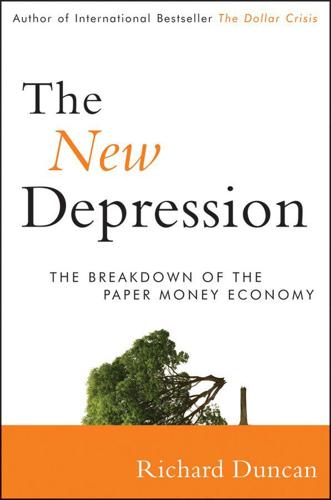
The New Depression: The Breakdown of the Paper Money Economy
by
Richard Duncan
Published 2 Apr 2012
Or, put differently, they should have replaced money with credit in the equation of exchange, because by the 1980s there was less and less difference between the two. Now there is essentially none. Money, it is said, must meet three criteria. It must be (1) a medium of exchange, (2) a store of value, and (3) a unit of account. And, in order to serve as a medium of exchange, money needs to be liquid, or in other words, easily accessible and transferable. Before 1968, there was a clear difference between money and credit. Until then, dollars were backed by gold, so the dollars in circulation represented a claim on a commodity with intrinsic value.
…
Today, if a person attempts to redeem a dollar by presenting it to the Treasury Department, the government has no obligation to give that person anything other than another dollar. Dollars now, therefore, are simply credit instruments that do not pay interest. Meanwhile, because of financial innovation, credit has become more like money. Most credit instruments have long met the three criteria that define money. They can serve as a medium of exchange, they are a store of value, and they are a unit of account. In the past, however, they were not liquid. Now they are. The repo market makes them liquid. The repurchase market allows the owner of any credit instrument to obtain cash immediately by agreeing to repurchase that asset at a specified date in the future. Treasury bonds, municipal bonds, corporate bonds, GSE debt, and asset-backed securities are all now completely liquid.
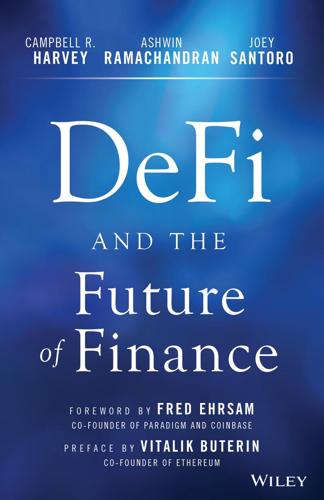
DeFi and the Future of Finance
by
Campbell R. Harvey
,
Ashwin Ramachandran
,
Joey Santoro
,
Vitalik Buterin
and
Fred Ehrsam
Published 23 Aug 2021
II THE ORIGINS OF MODERN DECENTRALIZED FINANCE A BRIEF HISTORY OF FINANCE Even as today's financial system is plagued with inefficiencies, it is far better than those of the past, where market exchanges were peer to peer and bartering required two parties' needs to match exactly. Out of this, an informal credit system emerged in villages whereby people kept a mental record of “gifts.”1 Modern coinage came much later, first emerging in Lydia around 600 BCE and providing what we think of as today's functions of money: unit of account, medium of exchange, and store of value. Important characteristics of money included durability, portability, divisibility, uniformity, limited supply, acceptability, and stability. Bank notes, originating in China, made their way to Europe in the thirteenth century. Nonphysical transfer of money originated in 1871 with Western Union.
…
Vitalik Buterin Co-founder of Ethereum I INTRODUCTION We have come full circle. The earliest form of market exchange was peer to peer, also known as barter.1 Barter was highly inefficient because supply and demand had to be exactly matched between peers. To solve the matching problem, money was introduced as a medium of exchange and store of value. Initial types of money were not centralized. Agents accepted any number of items such as stones or shells in exchange for goods. Eventually, specie money emerged, a form in which the currency had tangible value. Today, we have non-collateralized (fiat) currency controlled by central banks.
…
The key innovation of Bitcoin was to combine the idea of blockchain (time stamping) with a consensus mechanism called proof of work (introduced by Back8 in 2002). The technology produced an immutable ledger that eliminated a key problem with any digital asset: you can make perfect copies and spend them multiple times. Blockchains allow for the important features desirable in a store of value, which were never before simultaneously present in a single asset. Blockchains allow for cryptographic scarcity (Bitcoin has a fixed supply cap of 21 million), censorship resistance and user sovereignty (no entity other than the user can determine how to use funds), and portability (can send any quantity anywhere for a low flat fee).

The Blockchain Alternative: Rethinking Macroeconomic Policy and Economic Theory
by
Kariappa Bheemaiah
Published 26 Feb 2017
But the underlying architecture and the executed purpose has always been the same: to facilitate trustworthy interactions. If a certain kind of money is to exist, then it needs perform three functions : it needs to be a store of value, a unit of account, and a means of transfer. These three attributes manifest themselves in the form of a currency which is a physical representation of trust within a society. You do not need to trust a person to accept his money or vice versa. What allows trade to function in a modern-day economy is the fact that we trust the medium of exchange, be it dollars, euros, or anything else. Currencies in general have always been in a gradual state of evolution, with its format varying as economies evolve.
…
The word “Blockchain” is never used anywhere in the report except for two exceptions: first in the keywords classification in the abstract and second in the references, as one of the papers cited has the word “Blockchain” in the title. 14The three functions of money: i) medium of exchange (money is used as a trade intermediary to avoid the inconveniences of a barter system); ii) store of value (money can be saved and retrieved in the future); and iii) unit of account (money acts as a standard numerical unit for the measurement of value and costs of goods, services, assets, and liabilities). Source: (ECB, 2015). 15Refer to the article “Is Bitcoin Legal” (2014), on Coindesk: http://www.coindesk.com/information/is-bitcoin-legal/ 16There are a number of countries where multiple currencies are used simultaneously albeit unofficially, e.g., Singapore (Brunei dollar & Singapore dollar), Ukraine (Ukrainian hryvnia & Russian rouble);, and Zimbabwe (Botswana pula, British Pound, Chinese Yuan, Euro, Indian Rupee, South African Rand and USD).
…
Only 2%–3% is in the form of notes and liabilities of the government (McLeay et al., 2014). How much debt commercial banks issue and how that debt is utilized are therefore topics of great importance. Rather than exchanging currency , most consumers use their bank deposits as a store of value and as the medium of exchange. Once a bank creates money by issuing debt, most people use that money to make and receive payments via their deposits rather than currency, especially as transactions today are mostly digital. That money is then swapped from account to account as consumers make payments via the interbank clearing system.
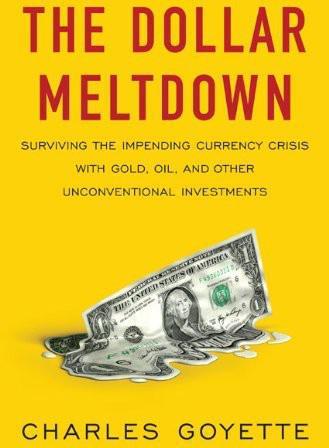
The Dollar Meltdown: Surviving the Coming Currency Crisis With Gold, Oil, and Other Unconventional Investments
by
Charles Goyette
Published 29 Oct 2009
Gathered together in one place, all the gold in the world, all the gold in coins, in teeth, in jewelry, and in works of art, all the gold buried in backyards, in banks, and in government vaults could be consolidated into a cube a mere twenty-two yards on a side. Gold is universally desirable. It is recognized and prized everywhere around the globe and has been for centuries. While salt’s desirability as a medium of exchange declines in places where it is mined or reclaimed, the desirability of gold has nothing to do with location or geography. It is valued as highly in the gold mining areas of South Africa as it is in the financial centers of Europe or the remote jungles of South America. In fact gold’s desirability is so universal that it would be easier to specify those who don’t recognize its unique allure and function.
…
The lesson that arms us for the future is this: ultimately the survival of the government and the governing classes (at least in the reckoning of those in charge) trumps the resilience of the economy and the well-being of the people. CHAPTER SIX American Money A Superior Sleight of Hand Government finance and the nation’s medium of exchange have in the future to be two separate things. —Ludwig von Mises The real secret of magic lies in the performance. —David Copperfield Inflation in the United States We have come a long way from the days of old when kings clipped coins as they came through the counting houses, or debased the coinage by diluting its precious metals content with base metals.
…
Nobody wants to give away anything against them. It was this that happened with the Continental currency in America in 1781, with the French mandats territoriaux in 1796, and with the German Mark in 1923. It will happen again whenever the same conditions appear. If a thing has to be used as a medium of exchange, public opinion must not believe that the quantity of this thing will increase beyond all bounds. Von Mises is clear that in “the crack-up boom” a critical mass has been reached in which the monetary authorities, short of collapse, are incapable of containing runaway prices. In a period of rapid inflation, the money loses value faster than its supply has been increased, and gold rises higher than the quantity of money would suggest.

Easy Money: Cryptocurrency, Casino Capitalism, and the Golden Age of Fraud
by
Ben McKenzie
and
Jacob Silverman
Published 17 Jul 2023
In economics, currencies do things: They are a medium of exchange, a unit of account, and a store of value. Medium of exchange means you use it to buy and sell stuff. Most people, if pressed, will define money this way: You buy shit with it. If we didn’t have money, we’d have to rely on bartering for the things we need. As an actor/performer, I’d literally be singing for my supper, which, if you have ever heard me sing, would be a terrible idea. Money simplifies things, creating a quantifiable system of IOUs we Americans call dollars. Unit of account is a way of measuring the market value of goods, services, and other transactions against each other.
…
Visa and Mastercard use comparatively miniscule amounts of electricity to serve a customer base orders of magnitude greater. Bitcoin’s energy consumption is enormously wasteful, and poses a massive environmental problem for the supposedly cutting-edge technology (and really, for all of us). When it came to the other two functions of money—store of value and unit of account—Bitcoin also fails miserably. The price jumps up and down like a rabbit on amphetamines, making it impossible to run a business using Bitcoin (or any other crypto) or hold on to it for any period of time with reasonable confidence it would retain its value. Could you use a cryptocurrency as a rudimentary form of money?
…
See Digital Commodities Consumer Protection Act Satoshi Nakamoto Saylor, Michael Scaramucci, Anthony Schoar, Antoinette Schulp, Jennifer Securities and Exchange Commission (SEC) self-custody Shalem, Yaron Shams, Amin Shiller, Robert Shkreli, Martin Silk Road Silvergate Exchange Network Silverman, Jacob Singh, Nishad smart contracts social psychology Solana Solomon, Ben Sorkin, Andrew Ross Soto, Darren South by Southwest (SXSW) Spaceballs (film) Special Purpose Acquisition Companies (SPACs) Stabenow, Debbie stablecoins Stallion Wings Stark, John Reed Sternlicht, Lin and Aaron Stone, Jason store of value Stornetta, W. Scott Strange, Susan subprime crisis Sun, Justin Super Bowl supply and demand Su Zhu Taran, Vyacheslav Taylor, Jon M. Tech Transparency Project (TTP) TeraExchange Terra Classic (LUNC) TerraClassicUSD (USTC) Terraform Labs TerraLuna TerraUSD (UST) Tether Thiel, Peter Thompson, Hunter S. Three Arrows Capital (3AC) Times of Israel Tomlin, Bennett Toomey, Pat top-of-the-pyramid promoters (TOPPs) Torres, Ritchie Trabucco, Sam TradFi Trump, Donald trustless money tulip mania Twitter Ultimate Bet unit of account Unlawful Internet Gambling Enforcement Act (2006) “Untethered” (McKenzie, B., and Silverman) utilitarianism Velde, Jean-Louis van der Ver, Roger Voyager Digital Wall Street Crash (1929) Wall Street Journal Wang, Gary wash trading Wetjen, Mark Whinstone Bitcoin facility wildcat banks Williams, Damian Wong, Tiffany Yaffe-Bellany, David Zawadzki, Dana

Radical Technologies: The Design of Everyday Life
by
Adam Greenfield
Published 29 May 2017
Bitcoin is like a black box crammed full of oddly shaped moving parts that don’t seem to make any sense, which mesh together in all sorts of disturbingly non-Euclidean ways—and yet do exactly what they’re supposed to do. However improbable it may be, Bitcoin works according to the terms set forth for it by its shadowy creator. But how well does it work as money? Which is to say: how well does it function practically as a medium of exchange, as a unit of account and as a store of value? As a unit of account, relatively few products and services are natively denominated in BTC—the kind of thing you’d have found for sale on the Silk Road exchange, perhaps, or elsewhere on the darknet—and I’ve never yet met anyone who intuitively reckons prices this way. People who use Bitcoin therefore need to consult realtime apps like ZeroBlock to measure their holdings against the US dollar or the euro to see how much they are worth; often such a ticker is the first and most prominent thing you see on enthusiast websites.
…
But other than that, and despite sporadic and fruitless investigations in the mass media, his identity remains a total cipher to this day. From the rather modest way in which he first characterized his innovation (“a peer-to-peer electronic cash system”), we can reasonably infer that Satoshi wasn’t proposing something intended to function as a long-term store of value, nor even as a unit of account in its own right. But it was clearly very carefully designed to work as an effective medium of exchange,4 between parties who would presumably continue to hold the bulk of their assets in some other currency. Perhaps we could think of Bitcoin in this sense as analogous to a trade pidgin or auxiliary language: the Esperanto of currencies.
…
If cryptocurrencies, blockchains and distributed ledgers1 more generally are to be the crux of the networked, postnational global economy of the remaining century, though, it’s vitally important that we, all of us, grasp at least the basic outlines of how they work and what it is they propose to achieve. At its core, Bitcoin is a digital medium of exchange that has been designed to act like cash in all the ways we might appreciate, and none of the ways we don’t. Before 2008, of course, there had been plenty of attempts at developing new forms of digital currency. All the pieces necessary to achieve this ambition seemed to be in place. Just about every adult on Earth carried on their person at all times a computational device eminently suitable for use as a transaction platform.
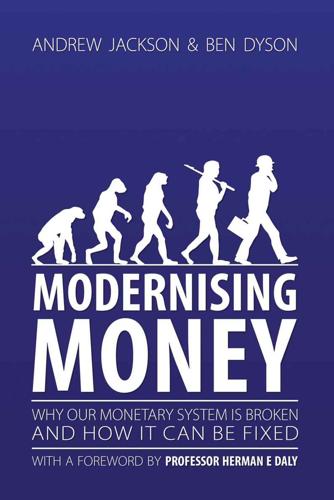
Modernising Money: Why Our Monetary System Is Broken and How It Can Be Fixed
by
Andrew Jackson (economist)
and
Ben Dyson (economist)
Published 15 Nov 2012
But first, we need to look at the other key element of the modern banking system – the central bank. Box 2.A - Money: What it is and what it's for What is money for? Textbooks tend to assign money four functions: A store of value: Money should preserve its purchasing power – a unit of currency should be able to purchase the same amount of goods tomorrow as it does today. A medium of exchange: Money is accepted in all circumstances in exchange for goods and services. A unit of account: Money is the yardstick against which all other goods and services are measured. A means of final settlement or payment: Once money has been transferred the transaction between two parties is complete.
…
Ratios between various commodities were thus established to measure whether a gift or grievance had been adequately compensated, and over time, gifts and counter-gifts became quantifiable as credits and debts. In a sense this created money as a unit of account (although it didn’t exist in physical form). This directly contradicts the orthodox story, which states that money emerged from barter, which itself was driven by market forces. Similar evidence is presented by economist and historian Michael Hudson, who traces the emergence of money as a unit of account to the Mesopotamian temple and palace administrations in 3500 BC: “It did not occur ... to Aristotle ... that specialization developed mainly within single large households of chieftains in tribally organised communities ...
…
Within the reformed system the amount of money in circulation will exist independently of bank lending decisions. What is more, under the reformed system money will predominantly be spent into the economy ‘debt-free’. Thus, money will exist without a corresponding debt – there will no longer be a need for the rest of the economy to ‘rent’ the medium of exchange from the banking sector. Instead, the money supply will be provided to the economy by the central bank for essentially zero cost. Of course, banks will still lend in the reformed system, and this will result in payments to the bank as a result of the interest that they charge on loans. Likewise people will still need to borrow.
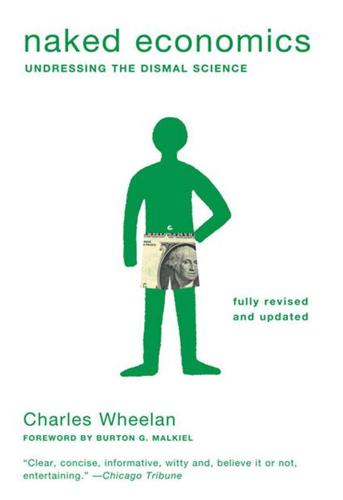
Naked Economics: Undressing the Dismal Science (Fully Revised and Updated)
by
Charles Wheelan
Published 18 Apr 2010
Neither bowling balls nor rose petals would serve the purpose. Last, money must be relatively scarce so that it can serve as a store of value. Clever people will always find a medium of exchange that works. Cigarettes long served as the medium of exchange in prisons, where cash is banned. (It doesn’t matter whether you smoke; cigarettes have value as long as enough other inmates smoke.) So what happened when smoking was banned in U.S. federal prisons? Inmates turned to another portable, durable store of value: cans of mackerel. According to the Wall Street Journal, a single can of mackerel, or “the mack” is the standard unit of currency behind bars.
…
(The word “salary” comes from the wages paid to Roman soldiers, who were paid in sacks of sal—salt.) Any medium of exchange—whether it is a gold coin, a whale tooth, or an American dollar—serves the same basic purposes. First, it serves as a means of exchange, so that I might enjoy pork chops for dinner tonight even though the butcher has no interest in buying this book. Second, it serves as a unit of account, so that the cost of all kinds of goods and services can be measured and compared using one scale. (Imagine life without a unit of account: The Gap is selling jeans for three chickens a pair while Tommy Hilfiger has similar pants on sale for eleven beaver pelts.
…
To understand why irresponsible monetary policy can have cataclysmic effects, we must first make a short digression on the nature of money. To economists, money is quite distinct from wealth. Wealth consists of all things that have value—houses, cars, commodities, human capital. Money, a tiny subset of that wealth, is merely a medium of exchange, something that facilitates trade and commerce. In theory, money is not even necessary. A simple economy could get along through barter alone. In a basic agricultural society, it’s easy enough to swap five chickens for a new dress or to pay a schoolteacher with a goat and three sacks of rice.
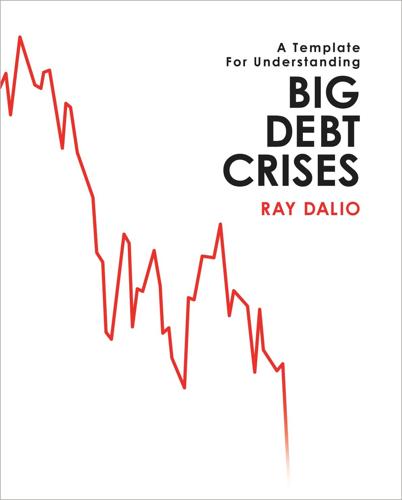
Big Debt Crises
by
Ray Dalio
Published 9 Sep 2018
as store holds of wealth. Capital investments like machinery and tools are purchased as stores of value, not because they were needed. It’s easy to see how these forces can create a feedback mechanism that causes inflation and currency declines to escalate until people completely lose faith in the currency. Money loses its role as a store of value (and people hold at most a few days’ reserves). The long list of zeros also makes it an impossible unit of account. Money also breaks down as a medium of exchange, because the currency instability makes producers unwilling to sell their products for domestic currency, and producers often demand payment in foreign currencies or barter.
…
It has existed for as long as there has been credit, going back to before Roman times. Even the Old Testament described the need to wipe out debt once every 50 years, which was called the Year of Jubilee. Like most dramas, this one both arises and transpires in ways that have reoccurred throughout history. Remember that money serves two purposes: it is a medium of exchange and a store hold of wealth. And because it has two purposes, it serves two masters: 1) those who want to obtain it for “life’s necessities,” usually by working for it, and 2) those who have stored wealth tied to its value. Throughout history these two groups have been called different things—e.g., the first group has been called workers, the proletariat, and “the have-nots,” and the second group has been called capitalists, investors, and “the haves.”
…
After reviewing this template, I encourage you to read about the hyperinflation in Germany’s Weimar Republic, which is examined in depth in Part 2, to compare it to the archetypal case described here. Before we turn to the charts and other data, please remember that: Currency and debt serve two purposes: to be 1) mediums of exchange and 2) store holds of wealth Debt is one person’s asset and another’s liability Debt is a promise to pay in a certain type of currency (e.g., dollars, euro, yen, pesos, etc.) Holders of debt assets expect to convert them into money and then into goods and services down the road, so they are very conscious of the rate of its loss of purchasing power (i.e., inflation) relative to the compensation (i.e., the interest rate) they get for holding it Central banks can only produce the type of money and credit that they control (e.g., the Fed makes dollar denominated money and credit, the BoJ makes Japanese yen money and credit, etc.)
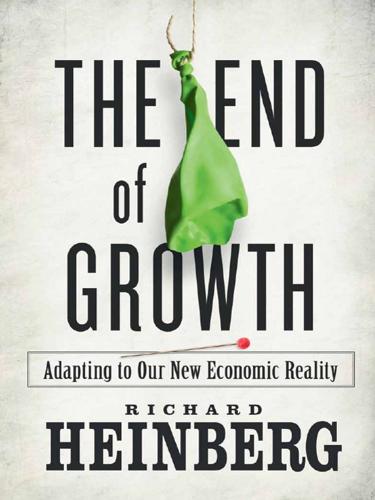
The End of Growth: Adapting to Our New Economic Reality
by
Richard Heinberg
Published 1 Jun 2011
Of these, the invention of money was clearly the most important. Money is a tool used to facilitate trade. People invented it because they needed a medium of exchange to make trading easier, simpler, and more flexible. Once money came into use, the exchange process was freed to grow and to insert itself into aspects of life where it had never been permitted previously. Money simultaneously began to serve other functions as well — principally, as a measure and store of value. Today we take money for granted. But until fairly recent times it was an oddity, something only merchants used on a daily basis. Some complex societies, including the Inca civilization, managed to do almost completely without it; even in the US, until the mid-20th century, many rural families used money only for occasional trips into town to buy nails, boots, glass, or other items they couldn’t grow or make for themselves on the farm.
…
Bernard Lietaer cites as examples credit-clearing systems such as the Commercial Credit Circuits (“C3”) in Brazil that enable small businesses to bypass banks for short-term financing; he points out that Uruguay allows payment of taxes in C3 currency.19 Greco goes on to offer a regional development plan based on credit clearing as well as suggestions for a complete web-based credit-clearing trade platform.20 The unit of account used in credit-clearing exchange systems can vary. Greco notes possibilities including a basket of commodities, a unit of energy (such as the kilowatt hour), an existing currency unit (the US dollar), or a labor standard (a statistical unit of labor productivity). Even gold or silver could be used as a unit of account — though this would not require stockpiling of metals or actual payment of accounts in coin. There would be a considerable advantage to using the same unit of account globally so as to facilitate trade, but currencies themselves would work best as nested, diverse systems — with local, regional, and national currencies in simultaneous use.
…
When this happens, paper and electronic currency systems based on money creation through fractional reserve banking will produce results somewhat similar to those of a collapsing Ponzi scheme: the vast majority of those involved will lose much or all of what they thought they had. BOX 1.1 Why Was Usury Banned? In his book Medici Money: Banking, Metaphysics, and Art in Fifteenth-Century Florence, Tim Parks writes: “Usury changes things. With interest rates, money is no longer a simple and stable commodity that just happens to have been chosen as a medium of exchange. Projected through time, it multiplies, and this without any toil on the part of the usurer. Everything becomes more fluid. A man can borrow money, buy a loom, sell his wool at a high price, change his station in life. Another man can borrow money, buy the first man’s wool, ship it abroad, and sell it at an even higher price.

The Evolution of Everything: How New Ideas Emerge
by
Matt Ridley
Soon it reached the critical mass where enough people were using M-Pesa that it made sense to join them, so as to be able to transact business with them. In Kenya people pay wages, purchase savings products and take out loans with M-Pesa cash. Money serves three main functions – a store of value, a medium of exchange and a unit of account. These are often in conflict: gold works well as a store of value, being scarce and non-rusting; but it is too scarce to be a practical medium of exchange. Cowrie shells once served as a form of money in some parts of the world, because they are so hard and so rare. The problem with commodity money is that it is vulnerable to inflation if the supply suddenly increases – the discovery of a new source of cowries, or a new goldmine.
…
Money began with collectibles – items like shells, bones and beads, valued for their lack of perishability – which early human beings are known to have gathered, then gradually came into its other role as a medium of exchange, so that barter could be generalised. Szabo showed special interest in his essay in the ideas of evolutionary psychology, citing many works on the topic. By the 2000s he was musing about something called bitgold, an imaginary software product that would mimic the properties of gold: it would be scarce and hard to acquire, but easy for others to verify, and thus could be trusted as a store of value. Clearly, he was trying to think how to recreate online the key steps in the evolution of real money.
…
He started printing money in Iraq, but the quality was poor, counterfeiting was easy and the quantity was too high, causing inflation. However, the Swiss-made dinars remained in circulation, and began to diverge in value from the local ones. Since there were no more being made, people saw them as a store of value and they held their value against the dollar. And then came bitcoins. The implications of crypto-currencies, and their recent evolution, are profound; they go well beyond the subject of money. They give us a glimpse of the future evolution of the internet itself. 16 The Evolution of the Internet Nothing can be made from nothing – once we see that’s so, Already we are on the way to what we want to know: What can things be fashioned from?

Life After Google: The Fall of Big Data and the Rise of the Blockchain Economy
by
George Gilder
Published 16 Jul 2018
By disintermediating transactions, cryptocurrencies also offer a remedy for the hypertrophy of finance—up near 40 percent of business profits—that has also coincided with the decline of GDP growth.4 Companies are abandoning hierarchy and pursuing heterarchy because, as the Tapscotts put it, “blockchain technology offers a credible and effective means not only of cutting out intermediaries, but also of radically lowering transaction costs, turning firms into networks, distributing economic power, and enabling both wealth creation and a more prosperous future.”5 Bitcoin aimed to burst the overstuffed $5.1 trillion daily piñata of modern currencies and unleash a crypto-copia. But the units of account—the monetary measuring sticks—remained in the world of fiat and gold. So bitcoin’s key current role is to contribute the technology of blockchains to the world. In the Great Unbundling, the blockchain generates tokens of functionality (from BAT for attention to GNT for supercomputing, to RNDR for graphics processing functions). It creates mediums of exchange (bitcoin, ether, Monero, Zcash), stores of value (bitcoin, ether, and others), rivets of security (Blockstack, Rivetz), software languages (Solidity, Golem), and measures of wealth.
…
With a total financial market of some $2.4 trillion, gold still dwarfs bitcoin at $128 billion. The supply of gold has grown by an average of 2 percent per year for centuries, giving it a less remorseless deflationary bias—an advantage over bitcoin, the supply of which is capped at twenty-one million units in 2140, 80 percent of which had already been “mined” by 2018. As a unit of account and store of value, two of the key facets of money, gold is the ultimate standard. If Wright is correct about its scalability, bitcoin could establish itself as a global alternative to fiat currencies during a historical period when these moneys are vulnerable to the depredations of the world’s governments, now indebted to the unsustainable level of $280 trillion.
…
For gold, transactions are incidental; for bitcoin, transactions are the key point. Bitcoin, unlike gold, must therefore increase in either volume or value if the system is to succeed. In debates with Steve Forbes, I strongly resisted his insight that though bitcoin could serve for transactions and as a store of value, it could not perform the central role of a currency as a unit of account and a measuring stick. I said just wait—gold and bitcoin will converge. It seemed to me that bitcoin resembles gold, slowly growing, perhaps a bit deflationary, but as I said in Scandal of Money, not so deflationary as to cause more than a slight gradient in favor of savers.

The Truth Machine: The Blockchain and the Future of Everything
by
Paul Vigna
and
Michael J. Casey
Published 27 Feb 2018
Of course, for this all to tie together, the miners must regard bitcoin currency as having value—they must believe they’ll be able to exchange it for other things of established value, be they goods and services or fiat currencies such as dollars. Fully exploring how they, and millions of others, came to conclude that bitcoins did have value requires a deeper dive into how human communities reach agreements on what constitutes a common medium of exchange, store of value, and unit of account—the three qualities of money. (For that dive, we again will shamelessly recommend The Age of Cryptocurrency.) What we can say is that, contrary to popular opinion, a currency need not be backed by anything, be it the commitment of a government or a fixed amount of commodity such as gold, only that it be sufficiently recognized as a useful means of measuring and clearing exchanges of value.
…
If we view the bitcoin currency from this angle—and not merely as it is popularly portrayed, as a strange new digital unit of value that some geeky guys think is a good alternative to dollars, euros, or yen—we can build a conceptual framework for understanding the wider implications of Satoshi’s invention. The currency, bitcoin (lowercase “b”), is first and foremost a store of value that rewards people for securing Bitcoin (uppercase “B”), the system. That, and not the hope that it will become an everyday medium of exchange, is its primary purpose. Without its existence as an incentive for computer owners to honestly validate exchanges of valuable information, Satoshi’s censorship-resistant distributed ledger simply wouldn’t work. Of course, for this all to tie together, the miners must regard bitcoin currency as having value—they must believe they’ll be able to exchange it for other things of established value, be they goods and services or fiat currencies such as dollars.
…
Still, when it comes to perception, that’s beside the point—none of these incidents helps Bitcoin’s reputation.) The other big detracting factor, though, is one that innovation could help solve: bitcoin’s price volatility. Since people, for now, tend to think in their national currencies, the digital currency’s wild swings against the dollar make it hard for Regular Joes to consider it as a medium of exchange. Who wants to shop with something whose value can make your grocery bill swing by 30 percent week to week? This is a massive barrier to Bitcoin achieving its great promise as a tool to achieve financial inclusion. A Jamaican immigrant in Miami might find the near-zero fees on a bitcoin transaction more appealing than the 9 percent it costs to use a Western Union agent to send money home to his mother.

Culture and Prosperity: The Truth About Markets - Why Some Nations Are Rich but Most Remain Poor
by
John Kay
Published 24 May 2004
Villages like Sicelo' s may not need to keep score in a formal way. But larger communities need money. Small businesses like the farm on which Sven and Ingrid work use accountants only to deal with the bank and the tax authorities. Big businesses need accounts for internal control as well as external reporting. Money acts as medium of exchange, store of value, and unit of account. These functions dictate the characteristics of a good money. 12 Money must be well defined-there should be no room for argument about whether a debt has been paid or not. Money must be storable. And money must have high value relative to its volume and weight, otherwise it will be difficult to carry it around.
…
Markets in Money Market economies trade flowers. They trade electricity. They trade risks. They also trade money itself Money is different from these other commodities because it has no intrinsic worth. Money is the unit of account in which we keep score and the medium of exchange by which we measure the price of everything else. But there are many different units of account and mediums of exchange: dollars and euros, Australian dollars and Singapore dollars, pesos and zlotys. So we trade one money against another-dollars for euros. Money is also a store ofvalue: we need money tomorrow as well as money today.
…
Many objects met these criteria in traditional societies. Some tribes kept score in cowrie shells. { 100} John Kay But scarce and decorative metals-gold and silver-were usually found to meet these requirements best. In concentration camps, where none of these were available, cigarettes became the medium of exchange and the unit of account. 13 Long after money first emerged, it was realized that reliable promises to provide gold or silver-bank notes-were easier to carry than the metals themselves. I will come back to the implications of this discovery in chapter 14. Strategic Behavior in Politics ••••••••••••••••••••••••••••••••••••• George Bush took Florida by 537 votes and was therefore declared the winner in the November 2000 presidential election.
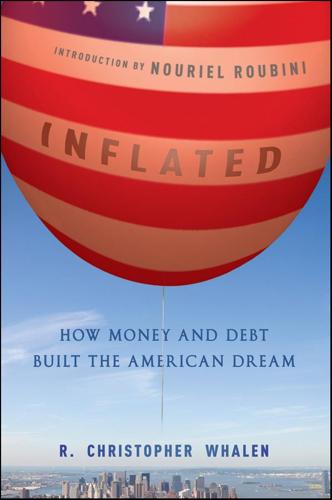
Inflated: How Money and Debt Built the American Dream
by
R. Christopher Whalen
Published 7 Dec 2010
But both Gould and Fisk reckoned their profits in greenbacks.31 The Panic of 1873 The gold market crisis of 1869 orchestrated by Gould and Fisk illustrated that paper money had become a powerful new market for speculation in gold, essentially another form of debt leveraged against the national banks, which in turn supported the state banks and the real economy’s need for liquidity. Gold remained the unit of account and store of value, but greenbacks were now accepted as a means of exchange by a growing portion of the population. With the passage of the National Bank Act in 1865, the connection between specie and paper money had in theory been stabilized. Yet as the gold market operation of Fisk and Gould four years later illustrates, speculating on changes in the paper value of gold had become a means to wager on the basic unit of account and therefore on the value of the U.S. economy. The year 1869 also marked the completion of the transcontinental railroad, a project championed by the railroad lawyer Lincoln, and with it a long period of capital expenditure.
…
However, the law merely reflected the fact that silver coins had dropped out of favor as a medium of exchange. Although a ratio of 16 to 1 had existed between the price of silver and gold going back nearly a century, increased supply in the United States and a drop in demand around the world in nations such as India and the United Kingdom caused the ratio to slip to almost 30 to 1 in the free market by the 1870s.40 With silver prices falling, the metal was not seen as a particularly robust store of value, but the attraction of free silver coinage for some proponents remained very powerful. There were large deposits of the metal in the western United States and the farmers and ranchers of those states often owed money for purchases of land.
…
In addition to embracing a gospel of inflationism and easy money, the silverites were invariably in favor of prohibition, public schools and against parochial education, Catholics, Lutherans, and other non-Pentecostal faiths.10 The Cross of Silver Not surprisingly, none of the proponents of a bimetallic standard for money seemed able to grasp, much less to accept, that the falling demand for silver had robbed the metal of its role as a store of value or a unit of account. Nations around the world were ending their use of silver for monetary purposes, and demand from industry and for jewelry was likewise depressed. Since a majority of their fellow citizens clearly preferred paper money or gold to silver as a means of exchange, the position of the silverites was truly hopeless in economic terms, even though politically it remained very powerful.
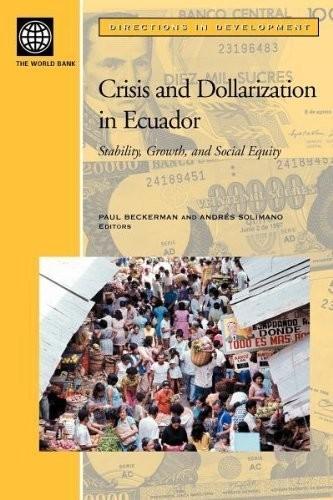
Crisis and Dollarization in Ecuador: Stability, Growth, and Social Equity
by
Paul Ely Beckerman
and
Andrés Solimano
Published 30 Apr 2002
Centro de Planificación y Estudios Sociales (World Bank Poverty Group) el Consejo de las Mujeres del Ecuador (National Council of Ecuadoran Women) debt-and-debt-service reduction Dirección Nacional de la Mujer (National Directory for Women, Ecuador) early childhood development Encuesta de Condiciones de Vida (Ecuador LSMS survey) economically active population European Union Fondo de Inversión Social de Emergencia (Emergency Social Investment Fund, Ecuador) gross domestic product Inter-American Development Bank Instituto Ecuatoriano de Seguro Social (Ecuadoran Social Security Institute) International Monetary Fund Instituto Nacional de Estadística y Censo (National Institute of Statistics and Census, Ecuador) Instituto Nacional del Niño y de la Familia (National Institute of the Child and the Family, Ecuador) London interbank offered rate Living Standards Measurement Study Mercado Común del Sur (Southern Common Market) National Center for Health Statistics, U.S. nongovernmental organization Organisation for Economic Co-operation and Development xi xii OPEC ORI PACMI PAHO PANN PDI PRONEPE SIISE SIMUJER STFS VAT WHO CRISIS AND DOLLARIZATION IN ECUADOR Organization of Petroleum Exporting Countries Operación Rescate Infantil (Child Rescue Program, Ecuador) Programa de Alimentación Complementaria Materno-Infantil (Maternal-Infant Nutrition Program, Ecuador) Pan American Health Organization Programa Nacional de Alimentación y Nutrición (Food and Nutrition Program that replaces PACMI in Ecuador) Programa de Desarrollo Infantil (Child Development Program, Ecuador) Alternativo Programa Nacional de la Educación Prescolar (National Alternative Preschool Education Program, Ecuador) Sistema Integrado de Indicadores Sociales del Ecuador (Integrated System of Social Indicators of Ecuador) Situation of Women and Gender Inequality Indicators database, Ecuador Secretaría Técnica del Frente Social (Technical Secretariat of the Social Front, Ecuador) value added tax World Health Organization 1 Crisis and Dollarization: An Overview Andrés Solimano Introduction On January 9, 2000, Ecuador decided to adopt the U.S. dollar as its national currency, its domestic medium of exchange, and its unit of account,1 thus becoming the first country to officially dollarize its economy in the 21st century. The purpose of this book is to analyze the context within which dollarization took place in Ecuador and some of its economic consequences. It describes the initial conditions, accompanying policies, and response of the economy to the official adoption of a foreign currency as the legal tender and the issues the still-new Ecuadoran experience with dollarization suggests for other countries considering the adoption of a new monetary regime.
…
Dollarization was implemented during 2000 according to the Economic Transformation Law, which the president signed into law in early March 2000 following approval by the Congress.5 The law provided that the Central Bank would repurchase the outstanding sucre money stock using its foreign-exchange holdings, and Ecuador would adopt the dollar as an official monetary unit, and for practical purposes the official mone- 96 CRISIS AND DOLLARIZATION IN ECUADOR tary unit.6 The law made the U.S. dollar the legal unit of account and medium of exchange, stipulating that all legal public and private accounting records would henceforth be maintained in dollars. Dollars or sucres could be used to settle contracts, but all foreign-trade transactions and taxes deriving from them would have to be settled in dollars. Over the course of 2000, the Central Bank repurchased almost the entire outstanding stock of sucres.
…
At a time when hyperinflation had abated in Latin America, the Ecuadoran case of extreme monetary instability was clearly a regional anomaly for the late 1990s. Most of the ingredients of high inflation and acute monetary instability were present: (a) a flight from national money and de-facto dollarization2 as nationals and foreigners in Ecuador lost all confidence in the capacity of the sucre to serve its store-of-value function, (b) large fiscal deficits, (c) a sharp contraction in real economic activity, and (d) a severe banking crisis.3 The increasingly cornered government, led by President Jamil Mahuad, a highly educated and intellectually sophisticated socialdemocrat, could not gather congressional support for passing crucial tax legislation and other measures to stabilize the economy.
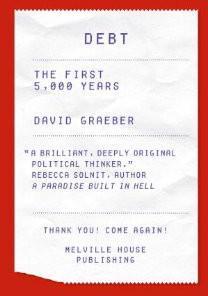
Debt: The First 5,000 Years
by
David Graeber
Published 1 Jan 2010
The existence of credit and debt has always been something of a scandal for economists, since it’s almost impossible to pretend that those lending and borrowing money are acting on purely “economic” motivations (for instance, that a loan to a stranger is the same as a loan to one’s cousin); it seems important, therefore, to begin the story of money in an imaginary world from which credit and debt have been entirely erased. Before we can apply the tools of anthropology to reconstruct the real history of money, we need to understand what’s wrong with the conventional account. Economists generally speak of three functions of money: medium of exchange, unit of account, and store of value. All economic textbooks treat the first as primary. Here’s a fairly typical extract from Economics, by Case, Fair, Gärtner, and Heather (1996): Money is vital to the working of a market economy. Imagine what life would be like without it. The alternative to a monetary economy is barter, people exchanging goods and services for other goods and services directly instead of exchanging via the medium of money.
…
Imagine trying to find people who offer for sale all the things you buy in a typical trip to the grocer’s, and who are willing to accept goods that you have to offer in exchange for their goods. Some agreed-upon medium of exchange (or means of payment) neatly eliminates the double coincidence of wants problem.2 It’s important to emphasize that this is not presented as something that actually happened, but as a purely imaginary exercise. “To see that society benefits from a medium of exchange” write Begg, Fischer and Dornbuch (Economics, 2005), “imagine a barter economy.” “Imagine the difficulty you would have today,” write Maunder, Myers, Wall, and Miller (Economics Explained, 1991), “if you had to exchange your labor directly for the fruits of someone else’s labor.”
…
A cumal was considered the equivalent in value of three milch cows or six heifers. 4. On cumal see Nolan 1926, Einzig 1949:247–48, Gerriets 1978, 1981, 1985, Patterson 1982:168–69, Kelly 1998:112–13. Most merely emphasize that cumal were just used as units of account and we don’t know anything about earlier practices. It’s notable, though, that in the law codes, when several different commodities are used as units of account, they will include that country’s most significant exports, and trade currency (that’s why in Russian codes, the units were fur and silver). This would imply a significant trade in female slaves in the period just before written records. 5.

What's Next?: Unconventional Wisdom on the Future of the World Economy
by
David Hale
and
Lyric Hughes Hale
Published 23 May 2011
The dollar, therefore, became the key “intervention” currency of most nations, and in turn the main currency in which other economies held their reserves. Domestic Currency Characteristics From this brief historical sketch we can derive the essential characteristics of domestic and international currencies. The classical requirements for domestic money are that it should fulfill three functions: 1. Unit of account 2. Medium of exchange 3. Store of value But clearly an international reserve currency that is used outside its domestic market (for example, for trade invoicing, capital remittances, reserve holdings, or as an exchange rate anchor for other currencies) must fulfill more than these three functions. The additional attributes necessary for a currency to perform international functions are listed below.
…
The RMB as a Potential International Reserve Currency Turning to consider future possible reserve currencies, what would have to happen for the Chinese RMB to emerge as an international reserve currency? Viewed in terms of the nine criteria for an international reserve currency, China and the RMB currently meet only five (unit of account, medium of exchange, store of value, economic size, and creditor status), while the remaining four (availability beyond home borders, full convertibility, developed financial system, and network effects) have yet to be met. In terms of its government debt market, China’s government and central bank bond market combined is still relatively small, with approximately $1.4 trillion outstanding in 2008, of which about half (mainly the central bank’s sterilization issuance) was short term.
…
Both currencies meet conditions 4 and 5, but these conditions are clearly not sufficient for international reserve status. International Reserve Currency Status To be not only an international currency, but also an international reserve currency, it must satisfy four additional requirements: 6. Creditor status. Creditor status is essentially an extension of the store-of-value concept, except that it is derived primarily from the strength or weakness of the management of the government’s fiscal accounts, as well as the economy’s net international balance of assets and liabilities, rather than from the monetary discipline of the central bank. Creditor status is arguably required for both international currency status and reserve currency status.
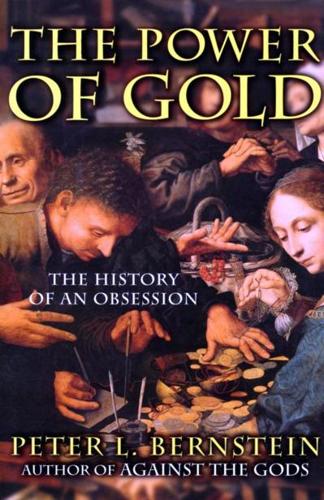
The Power of Gold: The History of an Obsession
by
Peter L. Bernstein
Published 1 Jan 2000
.*3 Furness points out, "In a land where food and drink and ready-made clothes grow on trees and may be had for the gathering, it is not easy to see how a man can run very deeply in debt for his living expenses." Nevertheless, people like some tangible representation of the labor they have expended that can be accumulated as wealth. The medium of exchange, or, more properly, the store of value on Yap at that time was called fei. Fei consisted of thick stone wheels with diameters ranging from saucer-size pieces to twelve-foot millstones. The stones from which these fei had been fashioned came from limestone quarries found on the island of Babelthuap, one of the Pelao Islands about four hundred miles away, and brought to Yap long ago, piece by piece, in canoes and on rafts by some venturesome natives described by Furness "as persuasive as ... the most glib book-agent."
…
Nobody issues a check denominated in a given number of specified gold coins or weight of gold bullion, any more than someone in the sixteenth century who drew a bill of exchange would denominate it in a number of coins or weight of bullion. Money in the private world had to be expressed in terms of a unit of account, such as dollars or euros, which was a convenient numeraire for defining the size of the transaction and the local money used by the parties to settle up. A unit of account is an abstract concept-you cannot see the dollars that a check transfers, nor can you feel them, bite into them, or weigh them. The only concern of the owner of private money is that the prince so regulate the supply of public money that the integrity of the unit of account is stable instead of withering away in the fires of inflation. If we extrapolate these developments through the centuries, they define much of the subsequent history of gold as money in Europe and the United States.
…
The stones from which these fei had been fashioned came from limestone quarries found on the island of Babelthuap, one of the Pelao Islands about four hundred miles away, and brought to Yap long ago, piece by piece, in canoes and on rafts by some venturesome natives described by Furness "as persuasive as ... the most glib book-agent." The smaller and more portable fei served as a medium of exchange and were handed around in payment for fish or pigs. The larger fei, however, received different treatment. The natives punched holes in the center of these fei to facilitate moving them about, but most of these big stones weighed so much that they remained permanently in one spot. On the rare occasions when a major transaction took place, the process went through with a simple acknowledgment of change of ownership while the "coin" continued to sit undisturbed wherever it happened to be.
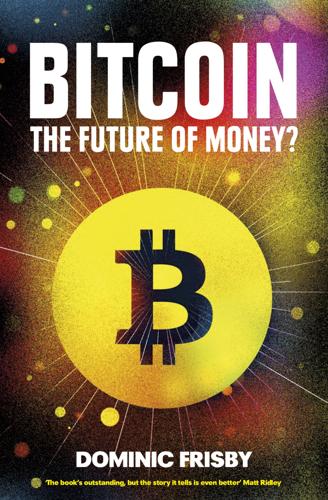
Bitcoin: The Future of Money?
by
Dominic Frisby
Published 1 Nov 2014
It’s called fully homomorphic encryption – really good awesome stuff if you can get it to work.’ He doesn’t own many bitcoins, I discover. I ask him why. ‘From an economic perspective I don’t like Bitcoin too much. I don’t think it’s a viable currency. Generally money has three components. It’s a store of value, a means of exchange and a unit of account. And you need all three for it to actually be real money. And then of course there are a lot of properties that you generally look at to determine if it’s high quality money or not. So you look at things like the visibility, ease of transferability, how the scarcity dynamics of the money work.
…
And if necessary Visa and MasterCard will drop their prices to compete so there could be a nice pressure – and about time. ‘Getting back to the basics of the argument, is Bitcoin a store of value or is it a means of exchange? And it’s trying to be both because, essentially, it’s a gold bar that you can email which is rather nice, because when I try to email a gold bar I struggle to get it into the socket. In that sense, cryptos really do work and very well. ‘But as a store of value you really wouldn’t want the volatility that it has. The average volatility over the last five years for Bitcoin has been 110% and higher for altcoins.
…
Higher prices should fix that problem. There are still too many bad actors and too many opportunities for cons, hacks and other crimes. Its widespread usership in black markets could undermine it – and certainly increase the likelihood of government opposition. Then there is the theoretical question of what it is – a medium of exchange, a store of wealth or a new asset class? People still think in terms of dollars and pounds rather than bitcoins. They price things in dollars. They don’t think about how many bitcoins they’re going to own. They think about how many dollars they’re eventually going to get for their bitcoins.
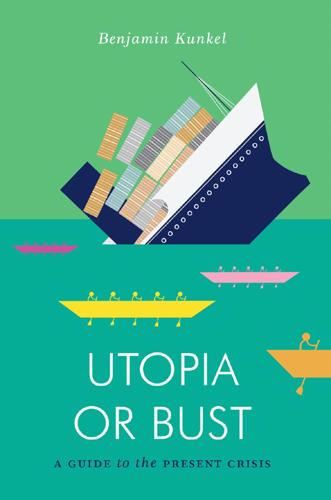
Utopia or Bust: A Guide to the Present Crisis
by
Benjamin Kunkel
Published 11 Mar 2014
Mesopotamian tablets dating from 3500 BC record rent, usually in the form of grain, owed by tenants of temple lands, and rations of barley due temple workers. These credits and debits may have been calculated in silver shekels, but coins hardly circulated at the time. In other words, of the three functions ascribed to money by economics textbooks—a medium of exchange, a unit of account, and a store of value—it was the second that came first. Coinage did not become widespread until several thousand years later. Graeber insists on the historical priority of debt to exchange in order to dispel the anthropological premise of modern economics: “the myth of barter.” Adam Smith supposed, as primers on economics complacently repeat, that economic life emerged from a propensity of the species to truck and barter.
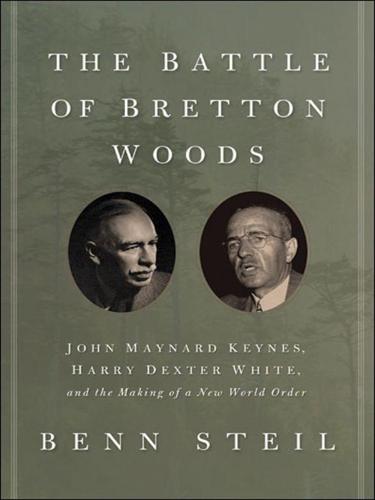
The Battle of Bretton Woods: John Maynard Keynes, Harry Dexter White, and the Making of a New World Order
by
Benn Steil
Published 14 May 2013
Even though we are still far from having a close and reliable relationship within or between nations, the trend is undoubtedly in that direction.”14 “But until that millennium arrives,” White clarified, bringing his argument back to contemporary political reality, “gold will continue to be sought by various governments because gold serves better than anything else as a combination war chest and protective cushion against the shocks of international change.”15 At another point in his essay, however, he characterized such a millennium as a distinctly dark one: “[W]ere all important countries to adopt a completely totalitarian form of government and barter their exports for imports so that there would be no balance due either of the trading countries, gold could be dispensed with,” suggesting that the end of gold money meant the end of liberal democracy itself.16 “When the day comes when one nation will have conquered all others (or all others except one or two) and will impose restrictions on the monetary behavior of the conquered countries—then gold is doomed. But when that catastrophe occurs many other institutions infinitely more valuable than monetary instruments will likewise be doomed.”17 White asked whether the U.S. dollar could ever come to supplant gold as the international medium of exchange and store of value. His answer was that it could do so only to the extent the United States were ultimately willing and able to redeem those dollars for fixed measures of the cold, hard metal. “There are some who believe that a universally accepted currency not redeemable in gold … is compatible with the existence of national sovereignties,” White observed, consciously or unconsciously encompassing Keynes.
…
White responded in badly feigned innocence. “There is no such currency.” “Well, you ought to know,” Smith shot back. “You had that in your.…” “I had a suggestion that something of that kind might be adopted as an international unit of account,” White interrupted, “but, as you know, before the Bretton Woods Conference, that was dropped.…” “You would have to have a name for that unit of account, would you not?” Smith put back to him. “It is because we had to have a name that we used the alternative ‘U.S. dollar.’ We think that is a pretty good name,” White ventured. “We were glad the other countries accepted the phrase, ‘gold or dollars.’”
…
Now he ventured that “a candid appraisal of the contributions which [the Fund and the Bank] have so far made toward the stated objectives would force us to the conclusion that achievement has been much less than anticipated.” This “would be much less disturbing if there were any substantial hopes that in the next few years the situation would change. But there is no such hope.” White now believed that the IMF needed to increase its monetary firepower dramatically. Remarkably, he now proposed “an international medium of exchange,” something he had steadfastly opposed when Keynes had championed it, “to supplement IMF resources.” The British loan had helped tremendously (though White had denied before the Senate Banking Committee in June 1945 that Britain even needed any special transitional assistance); the Marshall Plan had helped as well.

An Empire of Wealth: Rise of American Economy Power 1607-2000
by
John Steele Gordon
Published 12 Oct 2009
This enormously increases the number of transactions that can take place in an economy. Thus money functions economically in much the same way that a catalyst does in chemistry: it speeds up reactions while remaining itself unchanged. Money serves two other functions besides acting as a medium of exchange. It is a unit of account; that is, the value of all other commodities is expressed in terms of money. And money acts as a store of value, a place to hold wealth temporarily between productive investments. Many commodities have functioned in some respects as money. Cattle were often used, and indeed still are in some cultures. (The English word pecuniary, in fact, comes from the Latin Pecus, meaning ox.)
…
People passed the paper money but kept the specie in the mattress because they regarded it as a superior store of value, which it was. Inflation soon caused the paper money to shrink in value. In 1716 Massachusetts abolished paper money and imported Spanish dollars, but soon was back to printing bills of credit once more. Every province but Virginia eventually issued various forms of paper money, but it never replaced other forms of money. In North Carolina in the 1730s, there were no fewer than seventeen different forms of legal tender. The one unifying factor was that the pound sterling was used as the universal unit of account, even though British coins made up only a small portion of the specie in circulation and British banknotes hardly circulated at all.
…
As with any superior technology, the English settlers of North America, used to using money in their economic exchanges, wanted to continue enjoying the benefits a money economy. They looked for substitutes for “real money.” In New Netherlands and elsewhere, the fur-trading Indians used wampum as a medium of exchange, and so too did their Dutch- and English-speaking customers. Wampum is beads made from the shells of the freshwater clams that abound in the local lakes and rivers. They were sewn onto leather belts in elaborate patterns. Steel drills made it much easier to drill the holes in each bead and, therefore, greatly increased the amount that could be produced with a given amount of labor.

MegaThreats: Ten Dangerous Trends That Imperil Our Future, and How to Survive Them
by
Nouriel Roubini
Published 17 Oct 2022
All these financial innovations and other changes in financial markets lead to serious questions about the stability of the system in the face of megathreats. How much more unconventional will monetary policies become? What are the potential dire consequences of these experiments? Will fiat currencies survive as resilient stores of value, units of account, and mediums of exchange, or will policy actions debase them and financial innovation displace them? Will financial crises become more frequent and virulent? Will monetary unions such as the eurozone foster prosperity or eventual collapse? Will the US dollar retain its global reserve currency status or be replaced by the Chinese renminbi or other arrangements now that the dollar is increasingly weaponized?
…
The Chinese may be more aggressive in creating a digital currency, the e-RMB, and their economic power and influence in Asia and among other emerging market economies may significantly increase. If China becomes a leader in the technologies and industries of the future—starting with AI—it could offer to many emerging markets deals they’d find hard to refuse: e-commerce platforms; digital payment systems platforms; its currency as a means of payment, unit of account, and store of value; its surveillance systems as a way for autocrats to control their restless masses; and its 5G networks, big data, and Internet of Things solution for widespread adoption of new technologies. The role of the dollar could decline if China delivers a competitive economic, trading, investment, technological, monetary, financial, social, and political model.
…
The proof-of-work etched into every blockchain transaction may improve its reliability, but it does so at a snail’s pace. Another vital attribute makes money a stable store of value not exposed to dramatic swings in market value. Deposited savings should accrue interest until withdrawn and they should not be threatened with unpleasant price surprises from day to day. Super volatile cryptocurrencies still don’t meet at all that standard. Also, a currency should have a stable value relative to an index of the price of goods and services. Otherwise, the purchasing power of that “currency” becomes very unstable and thus an unreliable store of value. With bitcoin rising or falling in value by 10 percent or 20 percent in a matter of days, instability rules it out as a useful currency for exchanging goods and services.
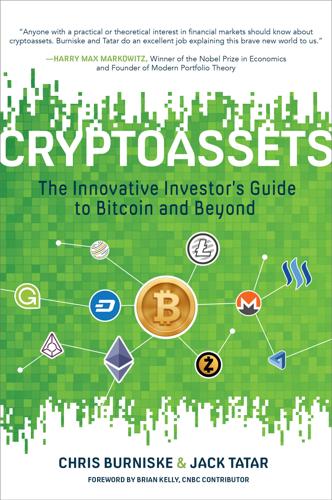
Cryptoassets: The Innovative Investor's Guide to Bitcoin and Beyond: The Innovative Investor's Guide to Bitcoin and Beyond
by
Chris Burniske
and
Jack Tatar
Published 19 Oct 2017
We would not classify the majority of cryptoassets as currencies, but rather most are either digital commodities (cryptocommodities), provisioning raw digital resources, or digital tokens (cryptotokens), provisioning finished digital goods and services. A currency fulfills three well-defined purposes: to serve as a means of exchange, store of value, and unit of account. However, the form of currency itself often has little inherent value. For example, the paper bills in people’s wallets have about as little value as the paper in their printer. Instead, they have the illusion of value, which if shared widely enough by society and endorsed by the government, allows these monetary bills to be used to buy goods and services, to store value for later purchases, and to serve as a metric to price the value of other things.
…
Just as there is diversity in equities, with analysts segmenting companies depending on their market capitalization, sector, or geography, so too is there diversity in cryptoassets. Bitcoin, litecoin, monero, dash, and zcash fulfill the three definitions of a currency: serving as a means of exchange, store of value, and unit of account. However, as we’ve seen, many other cryptoassets function as digital commodities, or cryptocommodities. These cryptocommodities include ether, storj, sia, and golem. Meanwhile, there are myriad cryptotokens for end-user-specific applications, such as augur, steem, singularDTV, or gamecredits.
…
For equities and bonds, the use cases are straightforward. Equities allow a company to raise capital from the capital markets via issuance of shares, while bonds allow a company to raise capital via the issuance of debt. Currencies are clear-cut in their use cases as well, serving as a means of exchange, store of value, and unit of account. Commodities are where use cases can become more diverse. The use cases for metals or semiconducting agents changes as technology progresses. For example, silicon was once a forgotten element, but with the age of semiconductors it has become vital, causing arguably the most innovative valley in the world to be named after it (though there is no physical silicon to be taken from the ground there).
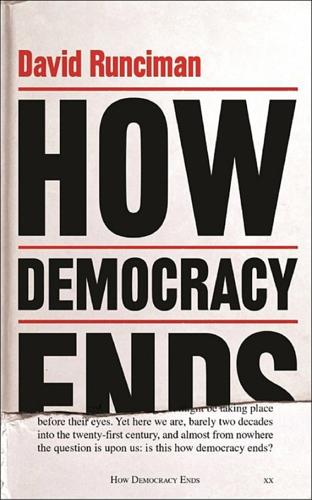
How Democracy Ends
by
David Runciman
Published 9 May 2018
Until Google and Facebook have their own currencies, both still have reason to be afraid of the US Federal Reserve. They need the state to provide them with a store of value. Without it, their own value is uncertain. That is why Bitcoin and other digital currencies are so attractive to many technologists – they open up the possibility of liberating them from their dependence on the state. Google and Facebook may well have their own money one day, or at least their own money-like equivalent that can serve as a store of value, unit of account and medium of exchange – it is a far more realistic prospect than either ever acquiring its own army. But it is probably at least twenty years away.
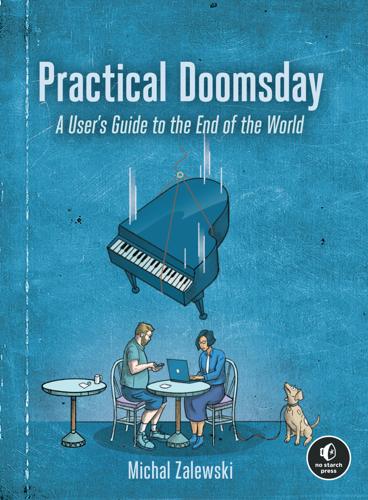
Practical Doomsday: A User's Guide to the End of the World
by
Michal Zalewski
Published 11 Jan 2022
If we accept the debt-based model of early economies, the first currencies almost certainly emerged as a straightforward consequence of the desire to settle on a particular unit of account. For example, if the aforementioned bushel of grain happened to be the most familiar and stable commodity in a particular region of the world, it would be simpler to track all account balances, and to quote all goods and services, using this quantity of grain as the reference point. Unlike in the classical barter model, this unit of account didn’t need to be particularly durable, desirable, or easy to carry; it was simply an accounting tool. And indeed, unusual and easily damaged currencies of this sort are encountered throughout history—from the finished beaver pelts (“made beavers”) used by early European settlers in North America5 to the cigarette-denominated economies of many modern-day prison environments.6 The Age of Coin Given the millennia that seem to have passed between the development of fairly complex economies and the emergence of coin, it would appear that contrary to conventional wisdom, a tangible medium of exchange wasn’t in urgent demand for local economic activity in small tribes.
…
And indeed, unusual and easily damaged currencies of this sort are encountered throughout history—from the finished beaver pelts (“made beavers”) used by early European settlers in North America5 to the cigarette-denominated economies of many modern-day prison environments.6 The Age of Coin Given the millennia that seem to have passed between the development of fairly complex economies and the emergence of coin, it would appear that contrary to conventional wisdom, a tangible medium of exchange wasn’t in urgent demand for local economic activity in small tribes. Instead, as human settlements grew in size, merged with their neighbors, and occasionally went to war, the development of coinage can be more logically explained through the prism of widening networks of trade. When dealing with an unfamiliar or a possibly hostile buyer from faraway lands, the concept of a debt ledger doesn’t always hold up.
…
Sometimes a farmer wanted a cooking pot, a potter wanted a knife, a blacksmith wanted a pair of pants, and a tailor wanted some pork. It’s said that the irreducible complexity of such multiparty trades severely hindered early economic activity. To address this problem, the textbooks continue, our ancestors eventually came up with a clever idea: the use of desirable, durable, and compact tokens as an intermediate store of value, effectively abstracting away the multistep nature of many trades. A farmer would sell pork for a piece of shiny rock, and then take the rock to a cobbler to trade for shoes; the cobbler would later exchange his new rock for other goods or services, without the farmer needing to be involved in any way.
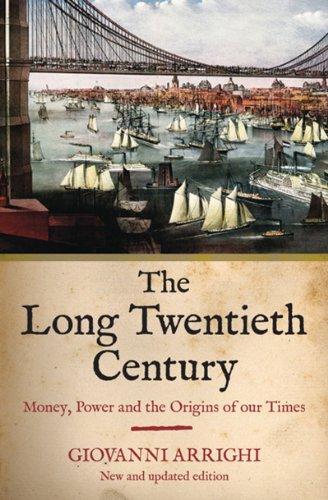
The Long Twentieth Century: Money, Power, and the Origins of Our Times
by
Giovanni Arrighi
Published 15 Mar 2010
Then, as now, capitalist organizations — be they business enterprises, governments, or combinations of the two — needed a sound and reliable unit of account with which to measure the profit and losses of their commercial and financial operations. If no such standard was available, then as now, these organizations were bound to mistake losses for profits, and vice versa, simply because of variations in the value of the means of payments with which their business was carried out. They were bound, that is, to fall victim to so-called monetary illusions. But were they to command a unit of account that effectively discounted these variations, far from falling victims to monetary illusions, they could profit handsomely from the monetary illusions of those from whom they bought and borrowed, and to whom they sold and lent.
…
But by the middle of the century they had come to realize that it was both in their interest and in their power to introduce an invariant unit of account with which to settle their mutual business, assess accurately the profitability of their far-flung commercial and financial deals, and be in a position to profit rather than lose from variations in time and space in the value of actually circulating money. Thus, in 1447 a law was passed requiring all business accounts relating to currency exchanges to be held in gold coin of fixed weight — a unit of account which soon became the [im dz’ buona moneta, sometimes also called moneta di mmbio. From the early 1450s onwards, this “good money” became the standard unit of Genoese business accounts not just for currency exchanges but for all transactions, whereas “current money” of variable value remained the standard means of exchange (Heers 1961: 52—5, 95-6).
…
The immediate response of the US government to the resurgence of private high finance in the production and regulation of world money was to reaffirm with a vengeance the centrality of Washington in the supply of world liquidity. Since there was no viable alternative to the dollar as the principal international reserve currency and medium of exchange, the abandonment of the gold-dollar exchange standard resulted in the establishment of a pure dollar standard. Instead of decreasing, the importance of the US dollar as world money increased, and what had previously existed informally was now established formally (Cohen 1977: 232-8). For about five years, from 1973 to 1978, this pure dollar standard seemed to endow the US government with an unprecedented freedom of action in the production of world money: The system of floating exchange rates . . . eliminated any need for the United States to control its own balance of payments deficit, no matter what its source, because it was now possible to release unlimited quantities of non-convertible dollars into international circulation.

The Sovereign Individual: How to Survive and Thrive During the Collapse of the Welfare State
by
James Dale Davidson
and
William Rees-Mogg
Published 3 Feb 1997
The odds of finding someone with exactly reciprocal desires to yours increase dramatically when you can sort instantly across the entire world rather than drawing on only those whom you might meet locally. Not Subject to Counterfeiting While paper money will no doubt remain in circulation as a residual medium of exchange for the poor and computer-illiterate, money for high-value transactions will be privatized. Cybermoney will no longer be denominated only in national units like the paper money of the industrial period. It probably will be defined in terms of grams or ounces of gold, as finely divisible as gold itself, Or it may be defined in terms of other real stores of value. Even where different pricing measures are used, or certain transactions continue to be denominated in national currencies, cybermoney will serve the consumers far better than nationalized money ever did.
…
Other than the serial numbers, all the receipts looked alike, a fact that appealed to counterfeiters as well as politicians and bankers seeking to profit from inflating the supply of money. Cybermoney will be all but impossible to counterfeit in this way, officially or unofficially. The verifiability of the digital receipts rules out this classic expedient for expropriating wealth through inflation. The new digital money of the Information Age will return control over the medium of exchange to the owners of wealth, who wish to preserve it, rather than to nationstates that wish to spirit it away. The Transaction Cost of "Free" Currency Use of this new cybermoney will substantially free you from the power of the state. Earlier, we cited the dreary record of the world's nationstates in maintaining the value of their currencies over the past half century.
…
In strict logic, therefore, the modern nationalist, unlike the hunter-gatherer of the Stone Age, could not reasonably expect any gesture of sacrifice or helping for his "in-group" to enhance the survival prospects for his family in a meaningful way. Notwithstanding the fact that national economies became the fundamental units of account in which wellbeing was measured in the modern era, the largest obstacle to the talented individual's success, and therefore to that of his kin, became the burdens imposed in the name of the nation, the in-group itself This, at least, was true for those primarily engaged in reciprocal rather than coercive sociality-to revisit Van Den Berghe's categories of human behavior. 68 The logic of the nationstate suggests that the ultimate price of citizenship is sacrifice and death.
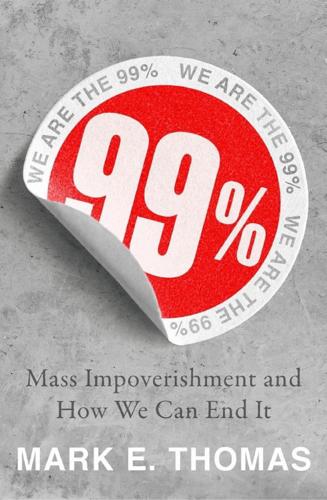
99%: Mass Impoverishment and How We Can End It
by
Mark Thomas
Published 7 Aug 2019
When the miller pays for the corn, she pays money (and not bags of flour). When the baker pays for the flour, eggs and butter, he pays money. Economists would say that money acts as a ‘medium of exchange’ in these transactions. It also acts as a ‘unit of account’: if we want to say how much value each has exchanged, the fact that all the transactions took place using money enables us to measure the value (in any unit of currency we wish). There is a third function of money – it can act as a ‘store of value’: if I like, I can keep some money in the bank or under my mattress to spend later. The money that we use today is known as a fiat currency, from the Latin word meaning let it be.

How Boards Work: And How They Can Work Better in a Chaotic World
by
Dambisa Moyo
Published 3 May 2021
And small businesses often face expensive transaction fees from their banks. Cryptocurrencies like Bitcoin can address these issues. They can also facilitate transactions in a war-torn country or where the government has ceased to function. In this situation, cryptocurrencies offer the same benefit of traditional money in that they are a unit of account, a medium of exchange, and a store of value. Supporters of cryptocurrencies argue that the governments behind today’s dominant currencies of global commerce—the US dollar, the euro, and the yen—are managing them in a reckless way, with high levels of debt that will cause inflation and ultimately undermine the currencies’ value.

The Industries of the Future
by
Alec Ross
Published 2 Feb 2016
As he describes, the economic principles of Bitcoin contradict the economic theories of both Adam Smith and John Maynard Keynes and push us back to medieval times when precious metals were the dominant store of value. Prominent economist Nouriel Roubini sent out a string of tweets attacking the notion that Bitcoin is a currency. As Roubini tweeted: “Apart from a base 4 criminal activities, Bitcoin is not a currency as it is not a unit of account or a means of payments or store of value.” He went on to explain his rationale in further tweets: “Bitcoin is not a unit of account as no price of goods and services is set in Bitcoin unit nor it ever will. So it isn’t a currency.” “Bitcoin isn’t a store of value as little wealth is in Bitcoin and no assets in it.
…
He is on the boards of Square and LendingClub, a popular peer-to-peer lending platform that has processed more than $6 billion in loans. He is also an advisor to Marc Andreessen’s venture capital firm. Fast-forward 18 months, and Larry now sees the potential of the blockchain technology facilitating the “medium of exchange” property of money. He has even joined the advisory board for Xapo, the Bitcoin company Reid Hoffman funded with the underground vaults. After an initially hostile response, Wall Street is also warming to the potential of blockchain technology. In April 2015, Goldman Sachs and Chinese investment firm IDG invested $50 million in a Bitcoin company, specifically because they liked the technical innovation that made it easy to move money around the globe.
…
Charlie Songhurst argues that “the strength of a government’s monetary system ultimately is a function of the strength of the rule of law in that country. Low-quality governments will have low-quality monetary systems. These will be the countries where Bitcoin is most likely to thrive. In the US/EU/Japan, the official currency is a fairly safe store of value (at least on a day-to-day basis) and the value of an alternative ledger system is minimal. In Argentina, Iraq, Venezuela, et al., this is not true. In those countries bitcoins will act like black-market dollars (much more useful than the official currency). But unlike black-market dollars, they can be used internationally—i.e., you can cross a border and email bitcoins to yourself, whereas dollars would get confiscated at the border.”
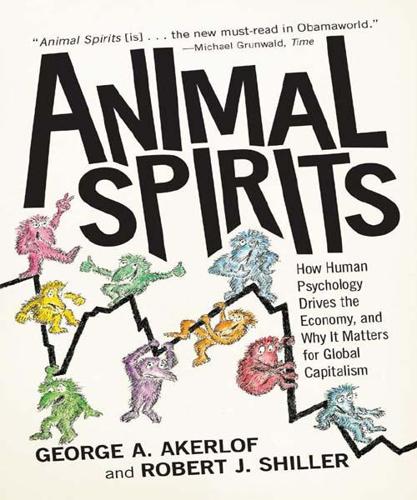
Animal Spirits: How Human Psychology Drives the Economy, and Why It Matters for Global Capitalism
by
George A. Akerlof
and
Robert J. Shiller
Published 1 Jan 2009
Economic textbooks often introduce the subject of money with a mantra: they declare that money is used as “a medium of exchange, a store of value, and a unit of account.” The first two parts of this mantra have been analyzed to death by economists; they lie at the heart of what economists call “the demand for money,” which relates how much money people want to hold to both their income and the prevailing interest rate. But economists have paid scant attention to the role of money as a unit of account. Its use as a unit of account means that people think in terms of money. It means that contracts are denominated in money terms.
…
It means that contracts are denominated in money terms. Likewise, accounting is conducted in nominal terms. And many legal provisions, including those underlying tax collection, are also phrased in terms of money. In each of these cases people could adjust nominal quantities so that the use of money as a unit of account had no effect. In each of these cases there could be automatic adjustment for inflation, for example, by means of indexation or cost-of-living adjustments (COLAs). According to the language of the economists of yesteryear, money could be just a “veil.” That would occur if people saw through inflation and it had no effect on real transactions.

How to Speak Money: What the Money People Say--And What It Really Means
by
John Lanchester
Published 5 Oct 2014
It’s sort of comforting, or at least I find it sort of comforting, to reflect on the fact that inflation is mysterious in its essence as well as in disconcerting practical manifestations like the price of this drink. As for money itself, that’s a subject of immense difficulty, again not just on the practical level but in its essence and nature. There’s a standard definition of money in economics, or at least of the uses of money, as serving a triple function: a store of value, a medium of exchange, and a unit of account. But the real uses of money are more mysterious than this makes them sound, and its evolution is more mysterious too. There are sometimes arguments in science about whether specific breakthroughs are better defined as discoveries or as inventions: are the findings of mathematics discoveries of entities that preexist, or are they creations of the human imagination?

The Ascent of Money: A Financial History of the World
by
Niall Ferguson
Published 13 Nov 2007
Valer un potosí, ‘to be worth a potosí’, is still a Spanish expression meaning to be worth a fortune. Pizarro’s conquest, it seemed, had made the Spanish crown rich beyond the dreams of avarice. Money, it is conventional to argue, is a medium of exchange, which has the advantage of eliminating inefficiencies of barter; a unit of account, which facilitates valuation and calculation; and a store of value, which allows economic transactions to be conducted over long periods as well as geographical distances. To perform all these functions optimally, money has to be available, affordable, durable, fungible, portable and reliable.
…
When an Indian named Diego Gualpa discovered its five great seams of silver in 1545, he changed the economic history of the world.9 The Incas could not understand the insatiable lust for gold and silver that seemed to grip Europeans. ‘Even if all the snow in the Andes turned to gold, still they would not be satisfied,’ complained Manco Capac.10 The Incas could not appreciate that, for Pizarro and his men, silver was more than shiny, decorative metal. It could be made into money: a unit of account, a store of value - portable power. To work the mines, the Spaniards at first relied on paying wages to the inhabitants of nearby villages. But conditions were so harsh that from the late sixteenth century a system of forced labour (la mita) had to be introduced, whereby men aged between 18 and 50 from the sixteen highland provinces were conscripted for seventeen weeks a year.11 Mortality among the miners was horrendous, not least because of constant exposure to the mercury fumes generated by the patio process of refinement, whereby ground-up silver ore was trampled into an amalgam with mercury, washed and then heated to burn off the mercury.12 The air down the mineshafts was (and remains) noxious and miners had to descend seven-hundred-foot shafts on the most primitive of steps, clambering back up after long hours of digging with sacks of ore tied to their backs.
…
The inscription states that Amil-mirra will pay 330 measures of barley to the bearer of the tablet at harvest time. Today, despite the fact that the purchasing power of the dollar has declined appreciably over the past fifty years, we remain more or less content with paper money - not to mention coins that are literally made from junk. Stores of value these are not. Even more amazingly, we are happy with money we cannot even see. Today’s electronic money can be moved from our employer, to our bank account, to our favourite retail outlets without ever physically materializing. It is this ‘virtual’ money that now dominates what economists call the money supply.
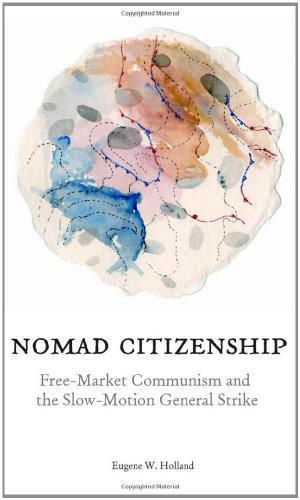
Nomad Citizenship: Free-Market Communism and the Slow-Motion General Strike
by
Eugene W. Holland
Published 1 Jan 2009
Toward the end of the Grundrisse, Marx muses th at once “the w orkers . . . themselves appropriate their own surplus labour . . . the measure of w ealth is then not any longer, in any way, labour time, but rather disposable tim e” (see M arx and Engels, Collected Works, vol. 28, 708). 131. There are generally understood to be three functions of money: medium of exchange, unit of accounting, and store of value. Inasm uch as money stores value, it enables comm odity exchange to develop from barter into true markets. At this point, it becomes a unit of accounting, inasmuch as goods are no longer evaluated directly in terms of other goods but in terms of m onetary units instead. The key distinction is w hether the value of money as u n it of accounting needs to be grounded in some external standard, such as gold or socially necessary labor tim e, or rem ains im m anent to the exchange process, as reflected in the value of the goods w hose exchange it mediates.
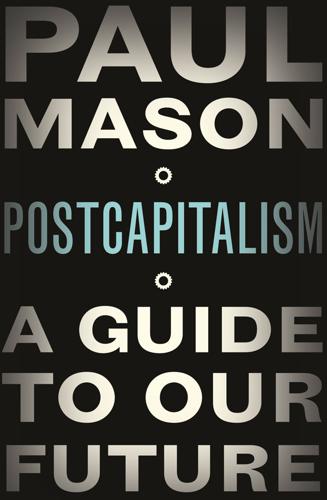
Postcapitalism: A Guide to Our Future
by
Paul Mason
Published 29 Jul 2015
‘The plan,’ said Trotsky, ‘is checked and, to a considerable degree, realized through the market.’21 To make even the crudest adjustment requires realtime information feedback. But in a heavily bureaucratic society, where to dissent was to invite a one-way ticket to the gulag, such feedback was strangled. Hence Trotsky’s emphasis on reviving workplace democracy. You needed a rolling plan: a combination of plan and market, with money used as both a medium of exchange and store of value. And you needed workers’ democracy. Money, said Preobrazhensky, would function normally in those sectors you could not plan, while in the planned sector of the economy, money would start to function as a technical accounting device. And while the aim is for the plan to swamp the market, the market could be expected to constantly ‘pollute’ the plan.
…
Long, complicated versions are available but for the purpose of understanding how postcapitalism might work, only the basics are needed. A commodity’s value is determined by the average amount of labour hours needed to produce it.12 It is not the actual number of hours worked that sets the value but the ‘socially necessary’ hours of work established across each industry or economy. So the basic unit of account here can be summed up as ‘hours of socially necessary labour time’. If we know what an hour of basic labour costs – in Bangladesh the minimum wage pays about 28 US cents an hour – we can express it in money. Here I will just stick to hours. Two things contribute to the value of a commodity: (a) the work done in the production process (which includes marketing, research, design, etc.) and (b) everything else (machinery, plant, raw materials, etc.).
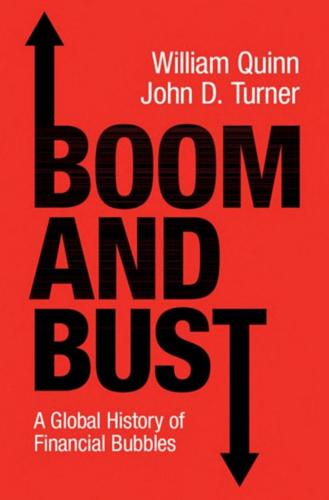
Boom and Bust: A Global History of Financial Bubbles
by
William Quinn
and
John D. Turner
Published 5 Aug 2020
It had promised freedom from middlemen, but trading it without a third party was cumbersome unless the user was expert in cybersecurity. Its popularity exposed the inability of its system to process large numbers of transactions, resulting in long delays in transferring bitcoins and substantial transaction costs. The impossibility of reversing mistakes made it impractical, and its volatility made it useless as a store of value or unit of account. And its much-vaunted decentralisation meant that no one had the power to fix these considerable drawbacks. It was simply a speculative asset, and when investors began to cash out, bitcoin crashed. In the 7 weeks following its peak, it fell by 65 per cent, reaching $6,698 in February 2018.
…
To its advocates, bitcoin was the money of the future: it could not be devalued through inflation by a central bank, you could spend it on anything without having to worry about government interference or taxes, and it cut out the middleman, namely commercial banks. A bitcoin did not represent anything of value – its worth lay entirely in the fact that it was, for some (mostly illicit) purposes, a superior medium of exchange.2 210 PREDICTING BUBBLES In August 2016, one bitcoin was trading at $555; in the next 16 months its price rose by almost 3,400 per cent to a peak of $19,783.3 This was accompanied by a promotion boom, as a mix of cryptocurrency enthusiasts and opportunistic charlatans issued their own virtual currencies in the form of initial coin offerings, or ICOs.

Wealth and Poverty: A New Edition for the Twenty-First Century
by
George Gilder
Published 30 Apr 1981
Rather than stressing aggregate demand for goods and services, they stress the dynamic supply of new ones. Rather than emphasizing control over the supply of money, they emphasize the generation of demand for money through the production of goods: the supplies that create the need for a store of value and a medium of exchange. Rather than dwelling on the quantity of money, they stress the quality of it: its anticipated worth in goods and services, or in gold. The desirability of holding money, after all, depends most fundamentally on acts of savings and investment that will provide new objects for purchase in the future.
…
If the purpose of lowering interest is to enhance the inducement to invest, an appropriate Keynesian policy is not to cut interest rates annually, but to cut taxes. High tax rates on income and capital presently play a greater role in deterring investment than did interest rates in the past, when government and taxation were often relatively small. Inflation steadily erodes the attractions of money as a store of value and liquidity. Keynes’ flirtation with a system by which all cash would have to be validated from one period to another by the purchase of stamps—government interest on its issues of cash—is now virtual reality. Inflation exacts a penalty on the hoarder just as regular and sure as any stamping system.
…
The fate of Midas, whose touch turned all to gold until he had nothing to eat—like the fate of Spain, whose fleet delivered an El Dorado on the doorsteps of Cadiz—demonstrates that unrequited saving can be as barren and fruitless as unrequited love. At present, individual Saudi Arabians can buy stock in productive facilities in other countries, and they can purchase gold, yachts, Rolls Royces, jewels, art, and other presumptive stores of value. The government can buy guns and planes and port facilities. But Saudi Arabia itself can only become a truly rich nation if it can transform the transitory streams of income from oil into capital goods at home, with a yield for the future. Material resources become durable wealth only when mixed with other resources in profitable combinations.

AI 2041: Ten Visions for Our Future
by
Kai-Fu Lee
and
Qiufan Chen
Published 13 Sep 2021
Professor Harari also said: “Money in fact is the most successful story ever invented and told by humans, because it is the only story everybody believes.” Money has been a key part of human society since 5,000 b.c. If money is demolished because everything is becoming free, it will bring down many key pillars of our society along with it. Money is a store of value, unit of account, and medium of exchange. But more important, we have been taught to accumulate money for centuries, in our pursuit of safety and survival. Money has become a status symbol that gives us respect as well as vanity. Our desire for money is often insatiable, leading to greed, but also providing a sense of purpose.
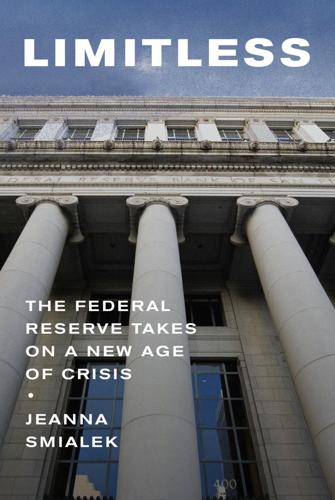
Limitless: The Federal Reserve Takes on a New Age of Crisis
by
Jeanna Smialek
Published 27 Feb 2023
Lydians, in western Turkey, were using gold coins twenty-five hundred years ago.[5] Money has varied in form over time, but a single underlying reality has tied the diverse systems together. Value lies less in its physical substance than in what its users understand it to signify as a medium of exchange, store of value, and unit of account. Money is an idea that we buy into, and common belief makes it work. Over the centuries and across human civilizations, people have used some combination of cash and debt—a promise to hand over cash or something else of value at some future date—to pay for goods and services.
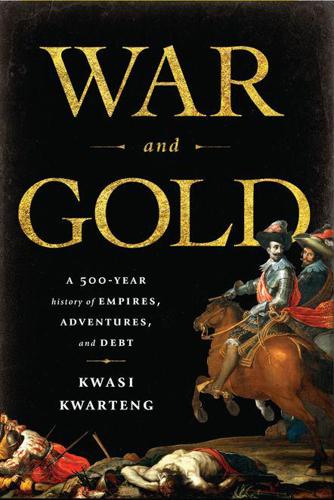
War and Gold: A Five-Hundred-Year History of Empires, Adventures, and Debt
by
Kwasi Kwarteng
Published 12 May 2014
In this tirade against paper money, Detlev Schlichter, a London-based former trader, lamented that today people lived ‘in a world of “paper money”’. ‘Today, money is nowhere a commodity. It is everywhere an irredeemable piece of paper that is not backed by anything.’ Schlichter observed that it was ‘simply a historic fact that commodity money has always provided a reasonably stable medium of exchange, while the entire history of state paper money has been an unmitigated disaster when judged on the basis of price level stability’.43 It was the explosion of credit, easy money and excessive loans which created a world that was financially unstable. From the point of view of some of the themes of this book, war, notably commitments in Afghanistan and Iraq, had put pressure on US government spending.
…
The average price of gold was $1,227 an ounce during 2010, the year in which he wrote the article, more than four times the average price of $279 in 2000.53 There were undoubtedly other issues driving the gold price, but one of the significant factors had been a loss of confidence in paper money as a store of value. Paul Krugman and other liberal commentators took a more optimistic view of the prospects of American indebtedness. To Krugman, the ‘deficit obsession’ was even more dangerous than the deficit itself.54 In an article in the New York Times on New Year’s Day 2012 entitled ‘Nobody Understands Debt’, the American economist spoke of the ‘allegedly urgent issue of reducing the budget deficit’.
…
The storm which swept the foreign exchange markets was unforeseen by most of the British officials whose policy it destroyed. Lamont, rarely for a politician, admitted that he ‘did not in any way foresee the scale of what was to happen’.25 On 3 September, the British government announced that the Bank of England would borrow 10 billion ecus (the European currency unit, the unit of account for the ERM), equivalent to £7.25 billion, and sell them for sterling. In effect, the Bank of England would use the borrowed money to buy pounds, to prop up sterling within its prescribed range in the ERM. After this announcement, sterling ‘did rise quickly above DM 2.80 for the first time in two weeks’.26 The range in which sterling could trade without a devaluation in the ERM was within 6 per cent either side of DM 2.95 to one pound.
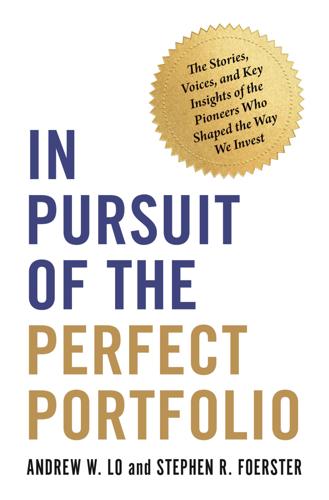
In Pursuit of the Perfect Portfolio: The Stories, Voices, and Key Insights of the Pioneers Who Shaped the Way We Invest
by
Andrew W. Lo
and
Stephen R. Foerster
Published 16 Aug 2021
Archaeological evidence suggests that Ea-Nasir’s wealth eventually declined, and he was forced to branch out from copper trading into less lucrative markets such as real estate and secondhand clothes trading.8 From BCE to CE: Coins, Bonds, Stocks, and More The lifeblood of any financial system is money. Money acts as a medium of exchange, allowing for a more efficient system than a world of barter. Money also acts as both a unit of account that indicates our wealth level and a store of value that can be saved and used later. To perform these functions, money needs to be durable, interchangeable, portable, and reliable. While barter is thought to have been around for at least one hundred thousand years, the earliest known coins were found by archaeologists in the Temple of Artemis at Ephesus, in present-day Turkey, and thought to be minted in 600 BCE.9 Made of gold and silver alloy, the coins featured the head of a roaring lion.

Manias, Panics and Crashes: A History of Financial Crises, Sixth Edition
by
Kindleberger, Charles P.
and
Robert Z., Aliber
Published 9 Aug 2011
Moreover their funds may still prove to be too small to cope with market forces when those markets get the bit between their teeth and need the supplement of those of the G-7 central banks. This is particularly the case if the currency in difficulty is the dollar, rather than the euro, the pound, or the yen, with smaller financial markets. While the dollar has troubles, it continues to be used as a world unit of account, if decreasingly as a medium of exchange, for lack of an adequate substitute. Japan and Germany were good followers of the American lead, but held back from challenging it. Under President de Gaulle, France continually challenged US policies and the dominance of the dollar without, however, great success, and is now fully involved with domestic, European and other international issues.
…
At the end of the 1990s the market price of gold was a bit less than $300 an ounce, and once again the cliché that gold is a good inflation hedge seemed valid; the price of gold had increased by a factor of fifteen since 1900 and the price of a market basket of US goods had increased by about the same amount. The market price of gold surged after 2008, apparently in expectation that national monies would become virtually worthless as banks failed; some investors wanted a secure store of value. Or maybe some investors believed that central banks would follow policies that would be inflationary as they increased the supply of credit in response to the failure of the banks. An earlier alternative explanation for this un-sober upswing were provided by Irving Fisher and by Knut Wicksell who emphasized that the real rate of interest was too low.15 Consumer prices increase in economic expansions and while interest rates increase, they increase less rapidly than the inflation rate so the real rate of interest declines.
…
The debate about the international credit institution that became the International Monetary Fund (IMF) was primarily between the British and the Americans, who held different views about both its financial structure and its financial resources. The ‘Keynes plan’ provided for an institution that would have its own money or unit of account. Member countries would be endowed with deposits in this institution which they could transfer to other countries to finance their payments deficits. The American view, the ‘White plan’, was that each member country would transfer gold and its own currency to the institution to endow its capital.

The Making of Global Capitalism
by
Leo Panitch
and
Sam Gindin
Published 8 Oct 2012
In spite of the international prominence of US industry by this time—accounting for a third of world production, with exports surpassing Germany and France and matching those of the UK—“the US was the only major industrial nation whose currency did not function as an international medium of exchange, unit of account or store of value.”72 This was only partly a legacy of its past reliance on the City of London to finance foreign trade; it also reflected the long tradition of farmer populism that had blocked the creation of a central bank and the emergence of a more centralized inter-state branch banking system.
…
The liquidity of the Treasury bond market was used to extend the geographical and institutional reach of the money market, and also had the subsequent effect of enabling the large banks to invent new financial instruments, such as certificates of deposit, which competed directly with Treasury bills.22 The American dollar’s role as an internationally secure store of value made “Yankee” bonds (foreign bonds issued in dollars in New York) especially attractive assets—so much so that between 1955 and 1962 they totaled one-and-a-half times the amount of foreign bonds issued in the principal European countries combined. This was a key factor in turning what had been an American dollar shortage in Europe into a dollar glut by the early 1960s.23 Amid a wave of takeovers and mergers, US banks built on the development of certificates of deposit to establish the securitization of commercial banking—in other words, to encourage customers to shift from depositing money in a bank to buying a tradable financial asset from it.
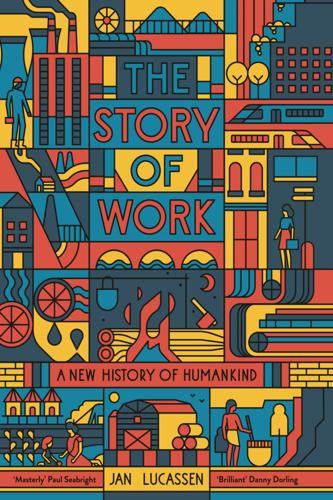
The Story of Work: A New History of Humankind
by
Jan Lucassen
Published 26 Jul 2021
A common-grade quachtli was valued at 65, 80 and 100 cacao beans, whereas 20 quachtli could support a commoner for a year in Tenochtitlan. Along these lines, 1 cacao bean might equate to the value of 1 hour’s work.190 This entire currency complex – as a repository of value (but with a limited life span as far as the cacao beans are concerned)191 and medium of exchange, although not universally exchangeable for all goods and services – bears the mark of a monetary system in development. As the archaeologist Michael E. Smith concludes: Clearly the Aztec economy was highly commercialized and dynamic, but it was not a capitalist economy. There was no wage labor, land was not a commodity to be bought and sold (except under limited circumstances), and opportunities for investment were limited to pochteca (merchants) expeditions.
…
The deben copper weight unit (of 91 grams of copper) was still used as a standard value (or accounting unit), but that was not an existing item and therefore not a means of exchange. What were a means of exchange were cast gold rings, but by nature only the super-elite made use of them, primarily as a store of value.114 This only changed a few centuries later, with the conquest of the country by Alexander the Great, and even then still very hesitantly, as we shall see. For thousands of years, Egypt was a powerful state with a high material culture, an early developed writing system and a large degree of division of labour.
…
The Ur III dynasty created a number of basic conditions for the emergence of markets, but probably not the markets themselves. Standard measures, replacing the earlier system of individual cities controlling their own system of weights and measures, was one of these conditions. The increased use of silver as the main unit of accounting and the circulation of this precious metal in the form of rods was part of this. That the appropriate amount of silver could be snipped off already comes close to a uniform payment system.76 Given that Ur III bureaucrats worked within a strict central and hierarchical structure, the question is whether many transactions were actually settled in this way.
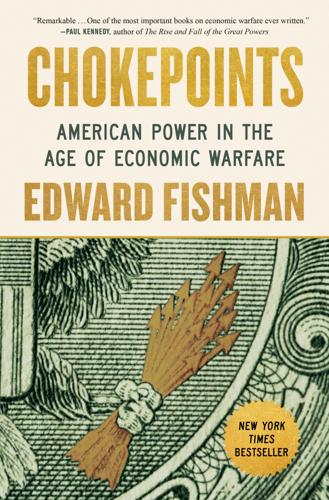
Chokepoints: American Power in the Age of Economic Warfare
by
Edward Fishman
Published 25 Feb 2025
And when firms anywhere turn to international capital markets for cash, they almost always borrow in dollars: 70 percent of foreign-currency debt is denominated in dollars. Impressive as these stats are, they represent just the tip of the iceberg. The dollar is also the world’s default unit of account and medium of exchange, which means that access to it is a necessity for participation in the global economy. When two firms based in different countries trade with each other, the buyer must first convert its currency to that of the seller. Consider an Indian farmer exporting rice to Saudi Arabia. To pay for the rice, the Saudi importer must convert Saudi riyals to Indian rupees.
…
At the heart of this infrastructure is a currency: the U.S. dollar. It has rightly become commonplace to think of the dollar as the global reserve currency and U.S. Treasuries as the safest asset for investors worldwide, attracting everyone from farmers in the Midwest to the Chinese Communist Party. The dollar is the world’s preeminent store of value. Central banks hold 60 percent of all foreign exchange reserves in dollars, three times the share of the second-place euro and more than twenty times that of the Chinese renminbi. America is also home to the world’s two largest stock markets, the New York Stock Exchange and the NASDAQ, both of which boast market capitalizations several times larger than those of their biggest foreign rivals.